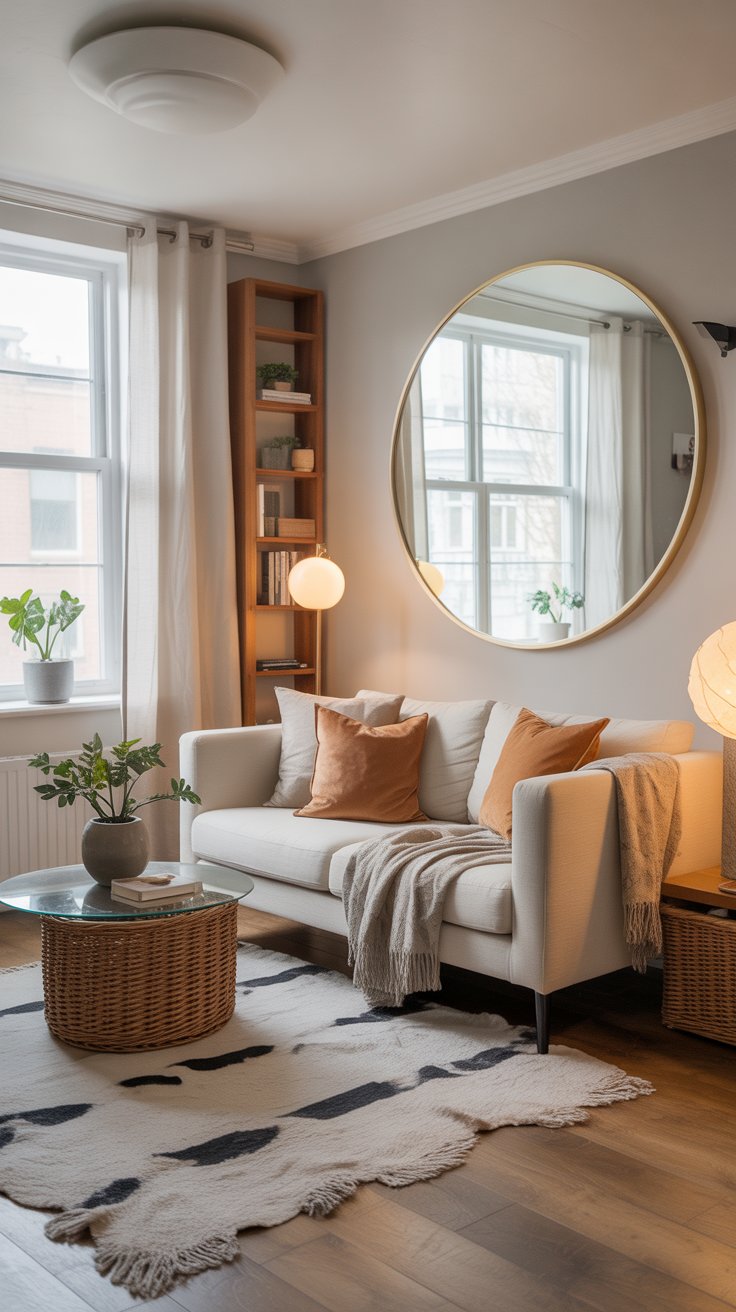
Tiny Living Room Ideas to Maximize Space and Style
Living in a compact apartment or a small home doesn’t mean you have to sacrifice style or comfort. With the right design strategies, even the smallest living room can feel spacious, functional, and inviting. Whether you prefer minimalism, coziness, or a modern touch, there are countless tiny living room ideas that can transform your space into a beautiful retreat.
In this article, we’ll explore smart hacks, furniture choices, and decorating tips that make small living rooms shine.
1. Smart Storage Solutions
The key to making the most of a small living space is organization. Hidden storage furniture and clever layouts keep clutter out of sight while maintaining style.
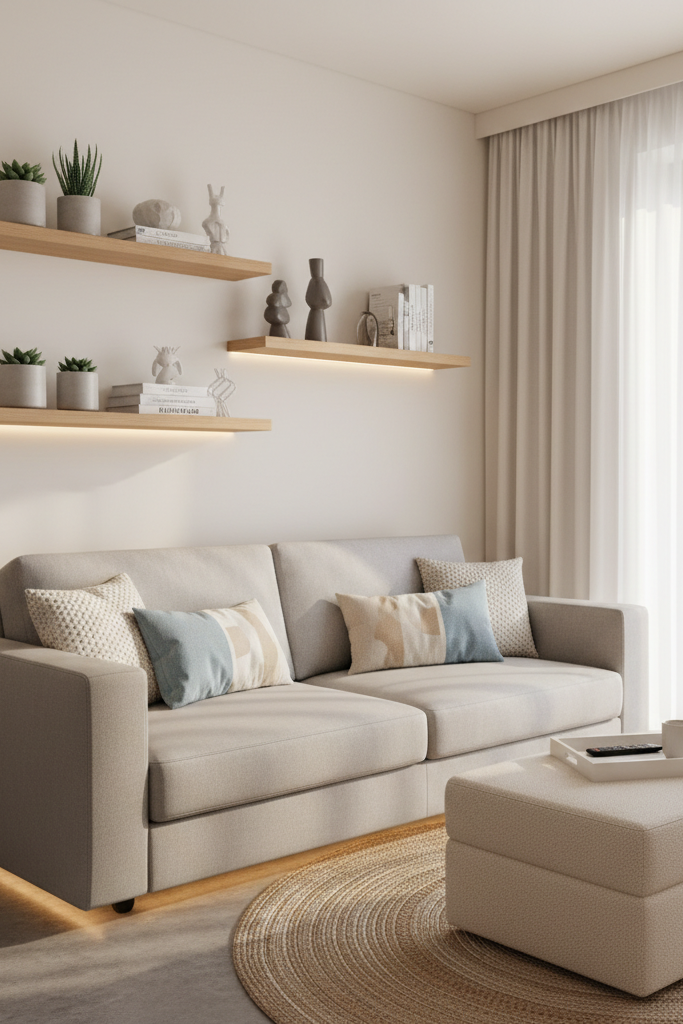
Floating shelves, wall-mounted cabinets, and storage ottomans are excellent space savers. A coffee table with drawers or nesting tables can also help keep essentials handy without overwhelming the room.
2. Cozy Atmosphere with Layers
Even if your living room is small, you can make it feel cozy and warm with the right textures and lighting.
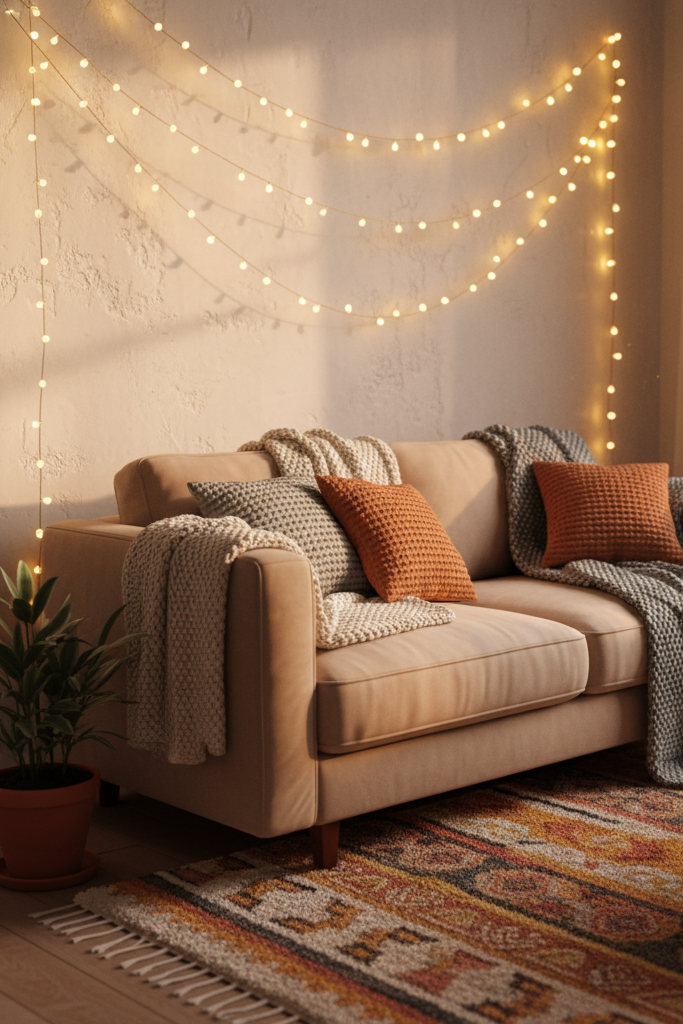
Layer different fabrics like cotton, wool, and linen for an inviting look. Use warm-toned lighting such as table lamps, candles, or fairy lights instead of harsh overhead bulbs.
3. Minimalist Designs for Spacious Feel
When space is limited, less is often more. Minimalist layouts create the illusion of openness by reducing visual clutter.
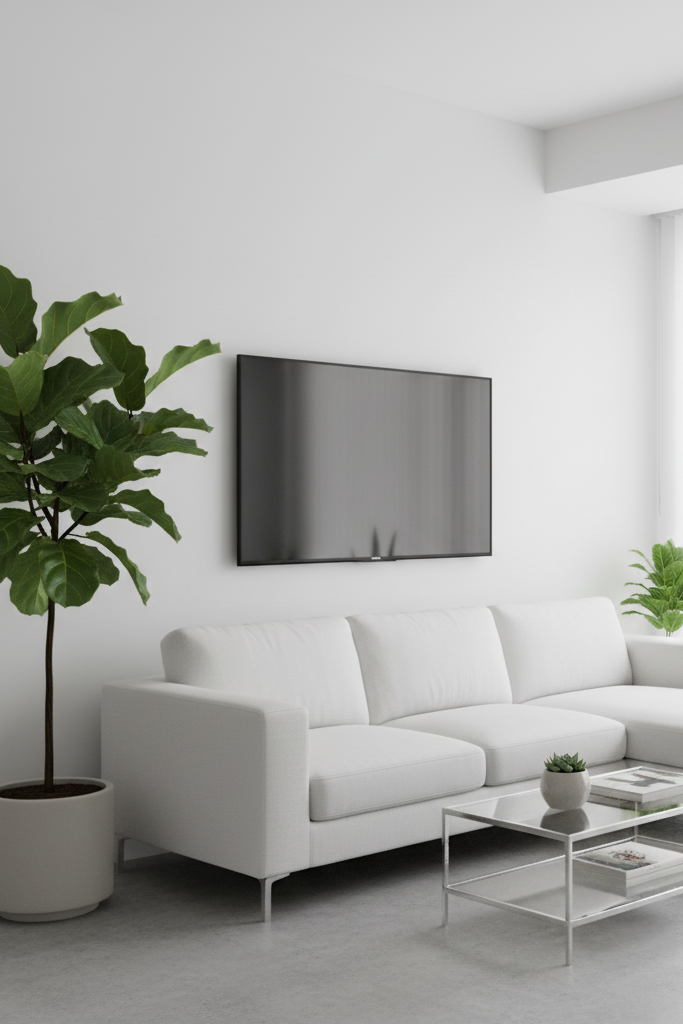
Stick to a neutral palette with pops of greenery or muted tones. Slim furniture and clean lines make the space look more open and stylish.
4. Multifunctional Furniture is a Game-Changer
A sofa that doubles as a bed, a wall-mounted foldable desk, or nesting coffee tables can make your living room versatile.

Multifunctional furniture ensures that every piece serves more than one purpose, saving both space and money.
5. Bright and Airy Vibes
If your living room feels cramped, use light to your advantage. Bright walls, mirrors, and sheer curtains create the illusion of space.

Natural light is your best friend. Large mirrors not only bounce light but also make the space appear double in size.
6. Budget-Friendly Makeovers
Redesigning your living room doesn’t have to be expensive. DIY décor, thrifted furniture, and simple updates can work wonders.
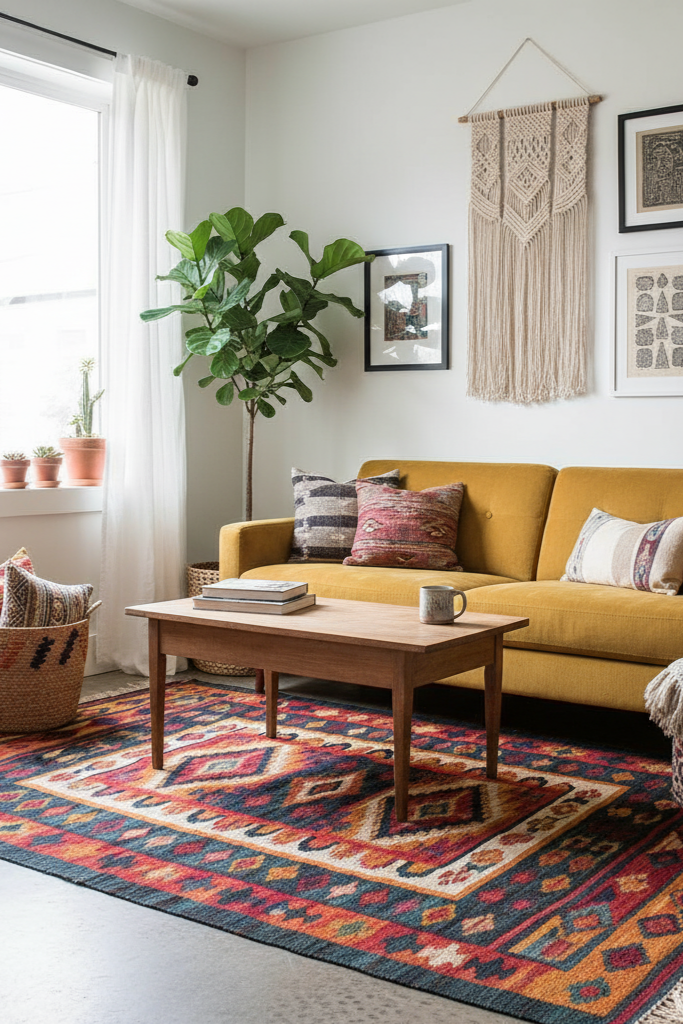
Affordable wall decals, peel-and-stick wallpaper, and DIY shelving can instantly refresh the room while staying within budget.
7. Vertical Space Matters
When floor space is limited, look up! Use your walls and ceiling to create extra storage and design impact.
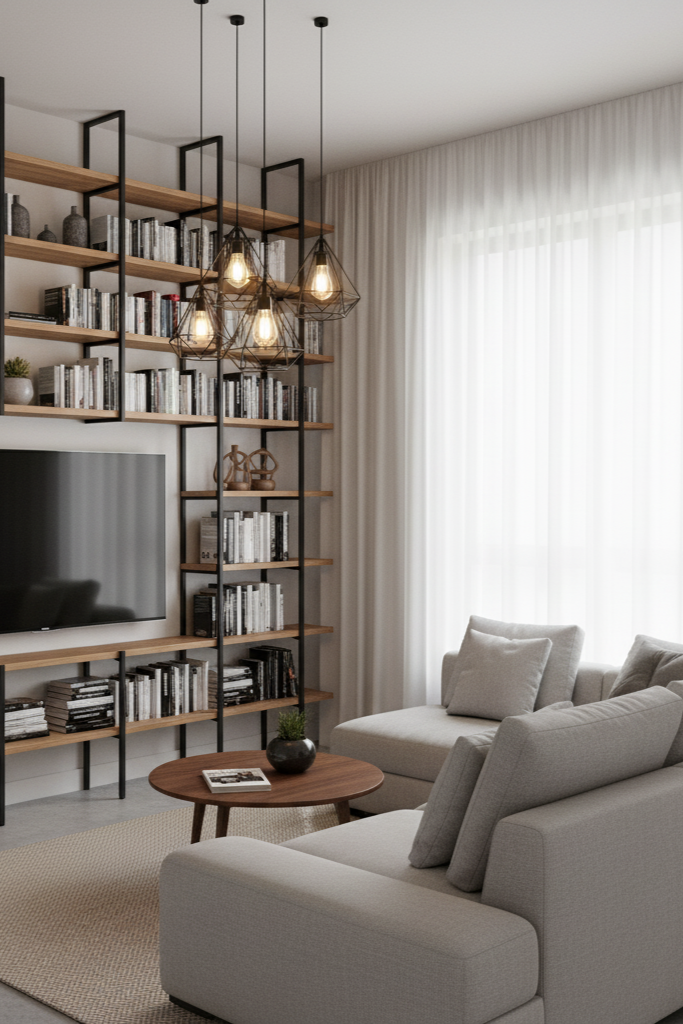
Tall bookshelves and vertical cabinets draw the eye upward, making the room feel taller and more spacious.
8. Play with Mirrors and Glass
Glass and reflective surfaces keep the room light and open.

Glass tables and mirrored furniture reflect light while adding a touch of elegance.
9. Small but Stylish Corners
Even in a small living room, you can create cozy nooks.
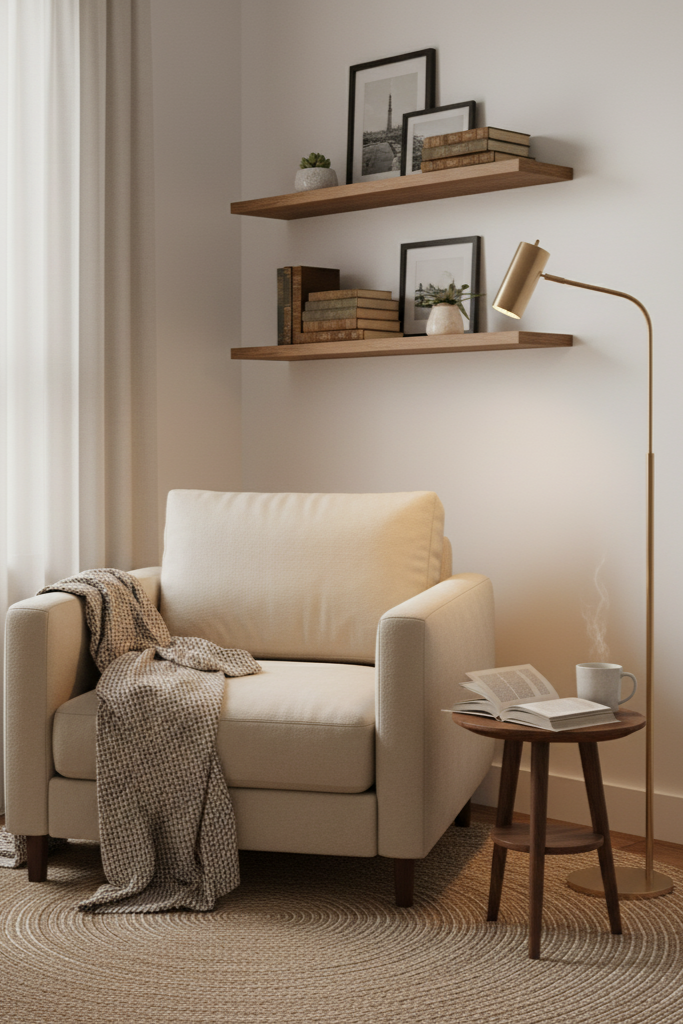
Adding a small armchair with a floor lamp makes a great reading corner without overwhelming the space.
10. Add Personality with Décor
Don’t let size limit your creativity. Wall art, statement rugs, and accent pieces can transform a tiny room.
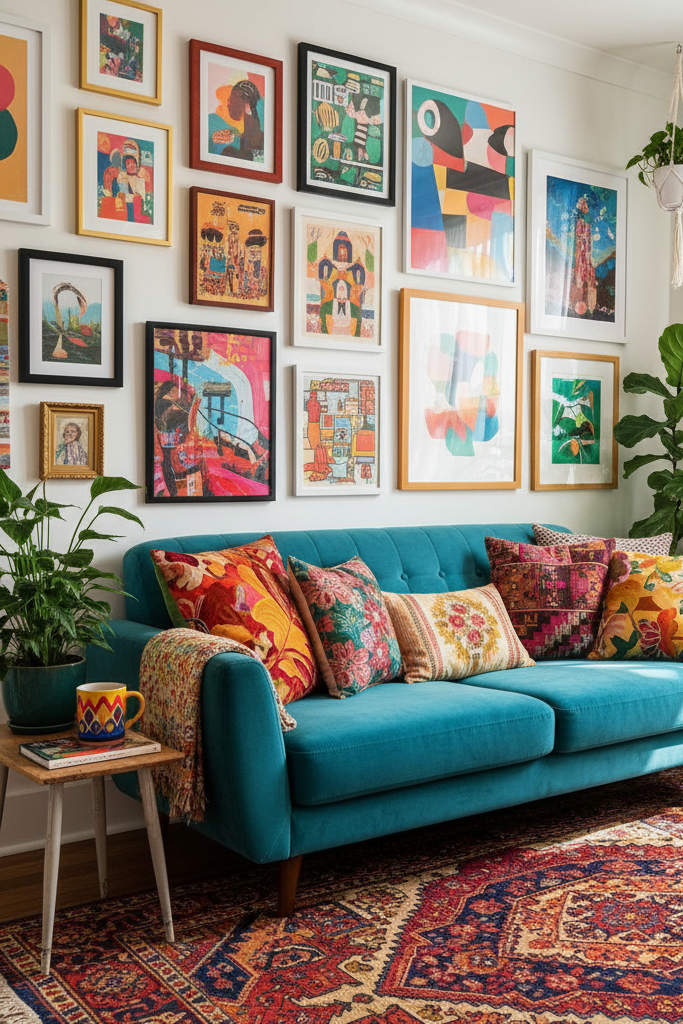
Keep the décor simple yet expressive to avoid making the room feel cluttered.
11. Choose the Right Color Palette
Light shades like white, cream, and pastel tones work best for small rooms.
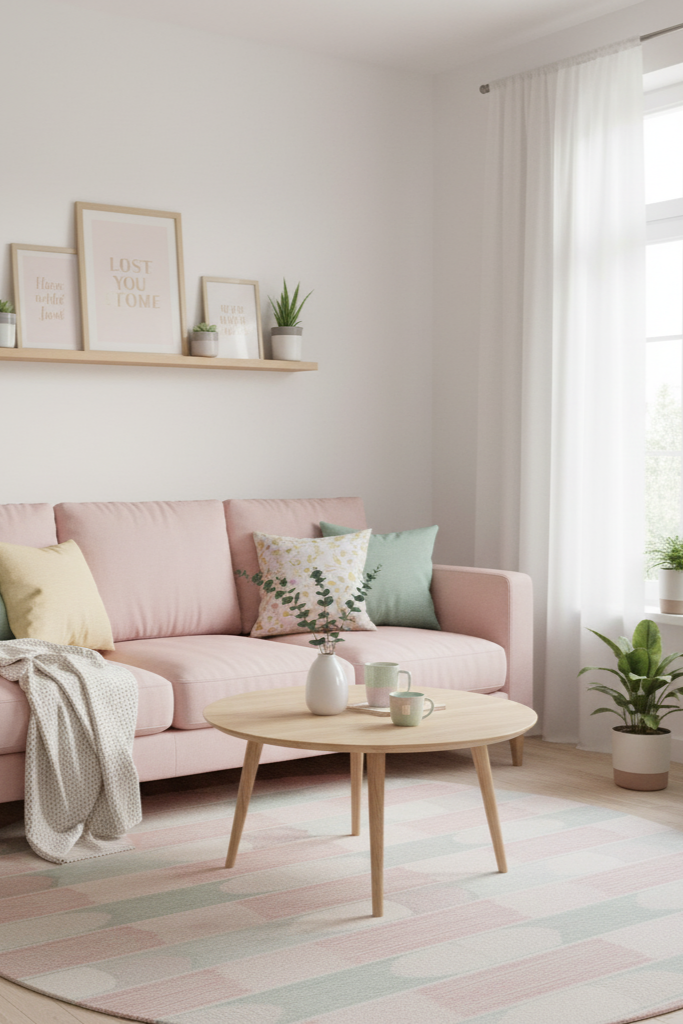
Accent colors can be added through cushions, throws, or artwork without making the room feel heavy.
12. Bring in Natural Elements
Plants and natural textures instantly freshen up the atmosphere.

Adding greenery not only beautifies the space but also purifies the air.
Conclusion
With thoughtful planning and the right design strategies, even the smallest spaces can feel stylish and functional. From multifunctional furniture to cozy layers and smart storage hacks, these tiny living room ideas prove that size is no barrier to beauty. Whether you’re decorating on a budget or going for a modern minimalist look, there’s a solution to make your space inviting, bright, and truly yours.
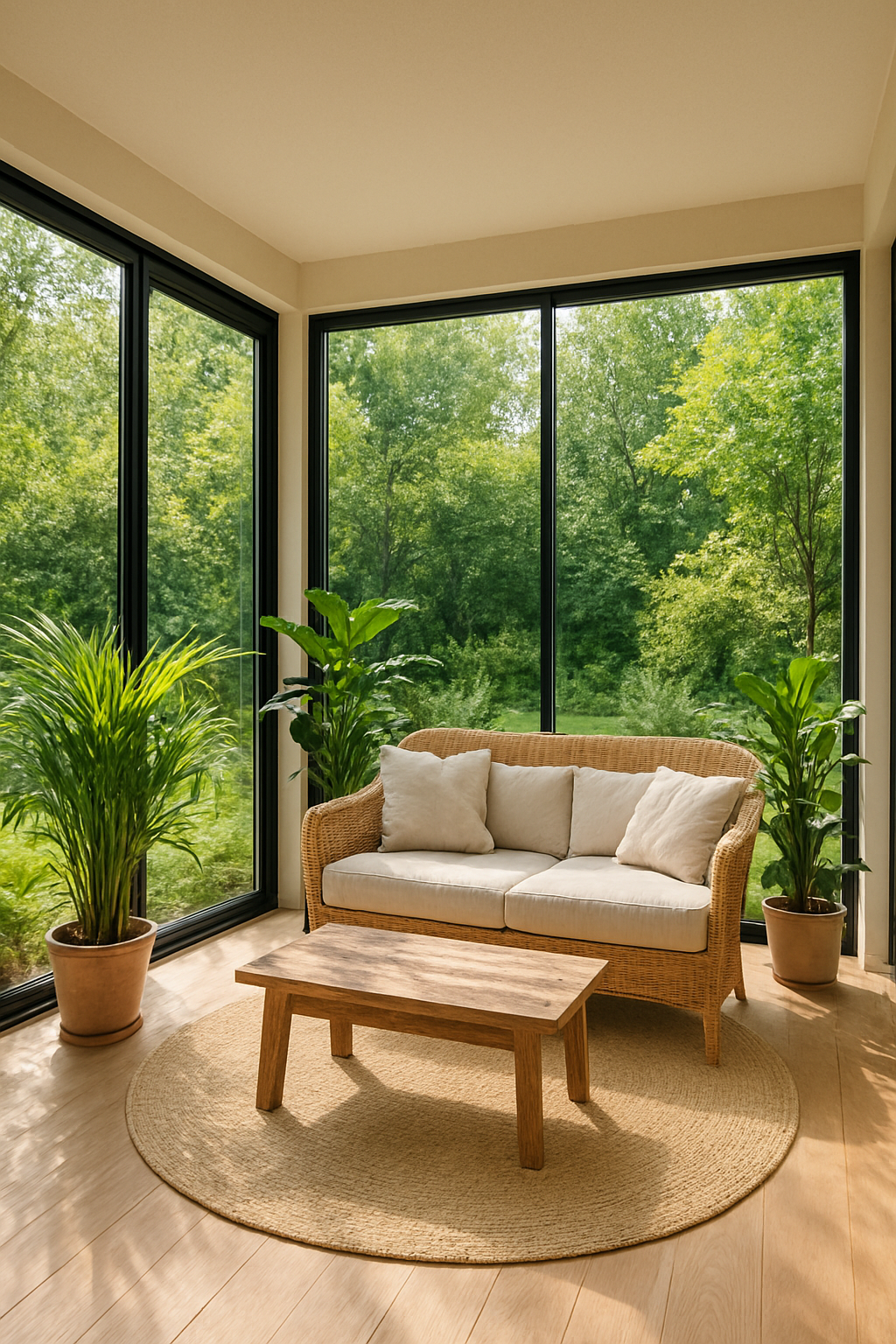
Garden Room Ideas: Stylish Ways to Create Your Perfect Indoor-Outdoor Space
A garden room is more than just an extension of your home—it’s a peaceful retreat where nature meets comfort. With the right design, a garden room can serve as a cozy lounge, a creative workspace, or even a luxury entertaining space. Whether you have a large backyard or just a small corner to transform, the right garden room ideas can elevate your living environment.
Why Choose a Garden Room?
Garden rooms are becoming increasingly popular for homeowners who want to maximize natural light and bring the outdoors inside. These versatile spaces often feature glass walls, greenery, and multifunctional furniture. Unlike a traditional patio or sunroom, a garden room can be customized for year-round use, making it a smart investment for both lifestyle and property value.
Cozy Garden Room for Relaxation
If you want your garden room to feel like a calming retreat, focus on cozy textures and natural elements. Rattan furniture, layered cushions, and soft lighting can instantly make the space warm and inviting. Adding potted plants and hanging greenery enhances the organic feel, while a rustic wooden coffee table anchors the design. This type of garden room is perfect for curling up with a book or enjoying your morning tea surrounded by nature.
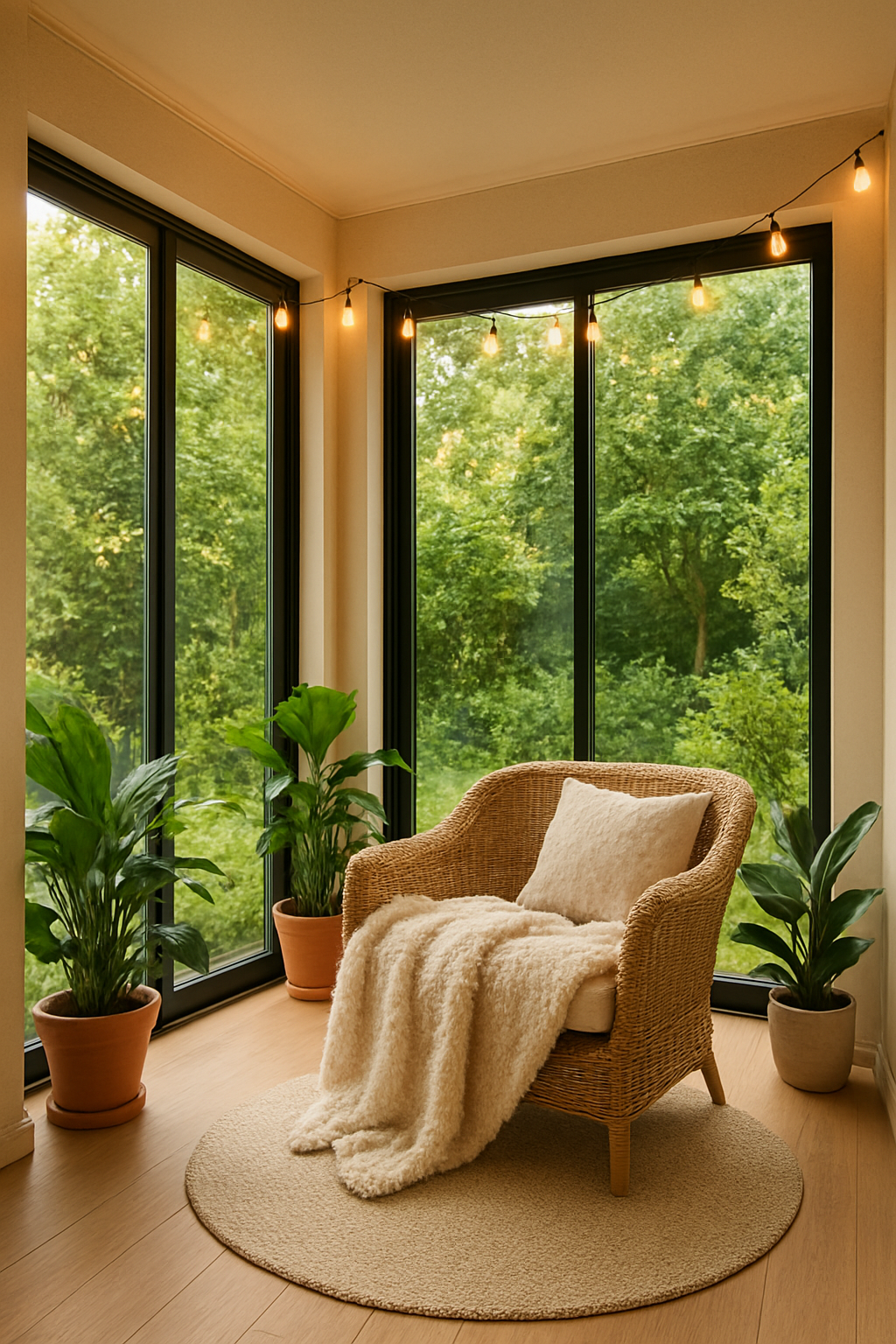
Modern Garden Room with Minimalist Touch
For those who prefer a sleek and stylish look, modern garden rooms with minimalist décor are a great choice. Use neutral tones, clean lines, and minimal furniture. Black-framed glass doors paired with a neutral sofa and a simple rug create a chic and contemporary vibe. This design highlights the beauty of open space while keeping the focus on natural light and greenery outside.
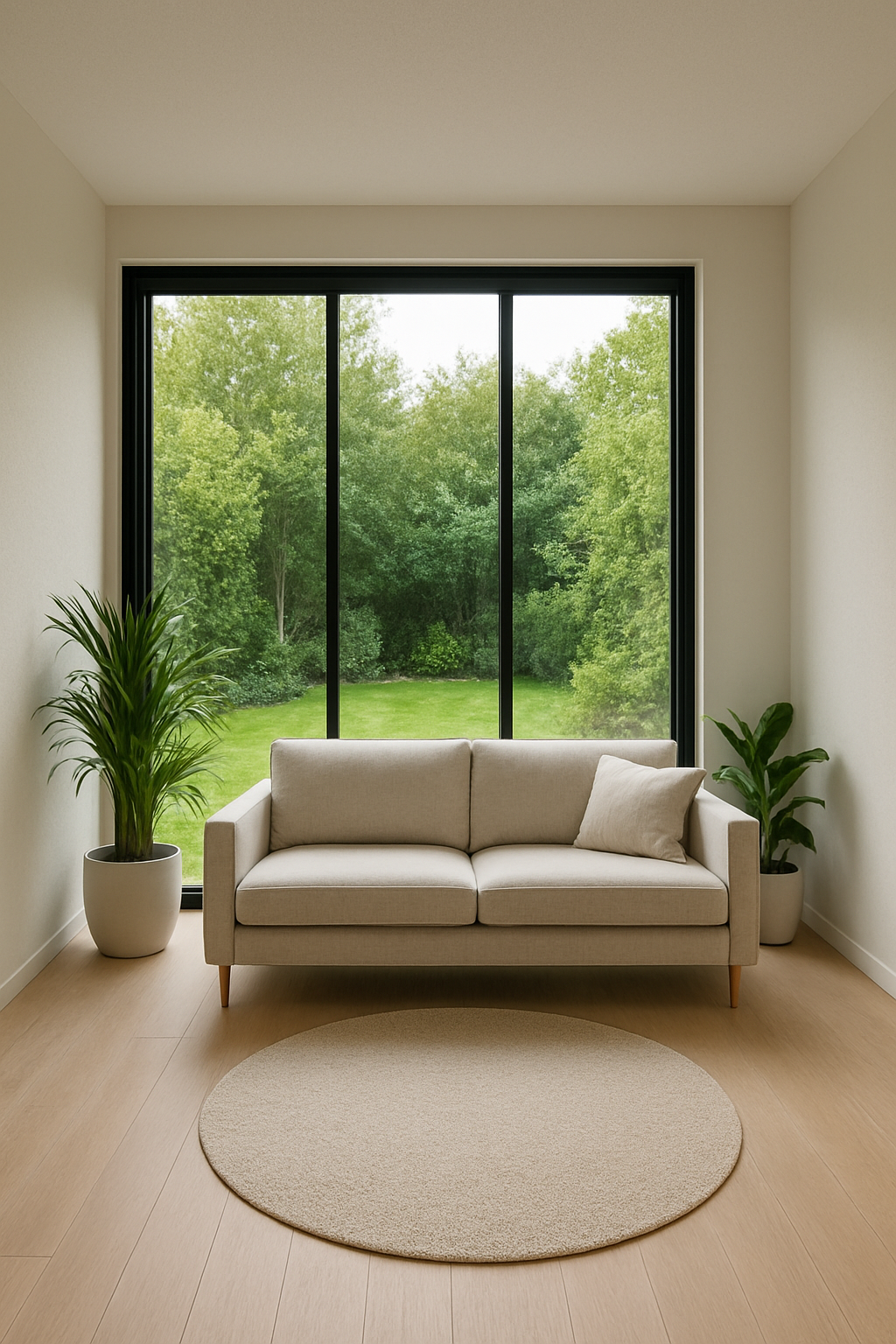
Small Garden Room Solutions
Not every home has space for a large extension, but that doesn’t mean you can’t create a charming garden room. Clever garden room ideas for small spaces include vertical gardens, foldable furniture, and light colors to make the room feel bigger. Hanging fairy lights or using sheer curtains can also add depth and warmth without overcrowding the space. Small garden rooms are ideal for city apartments or compact homes where every inch matters.
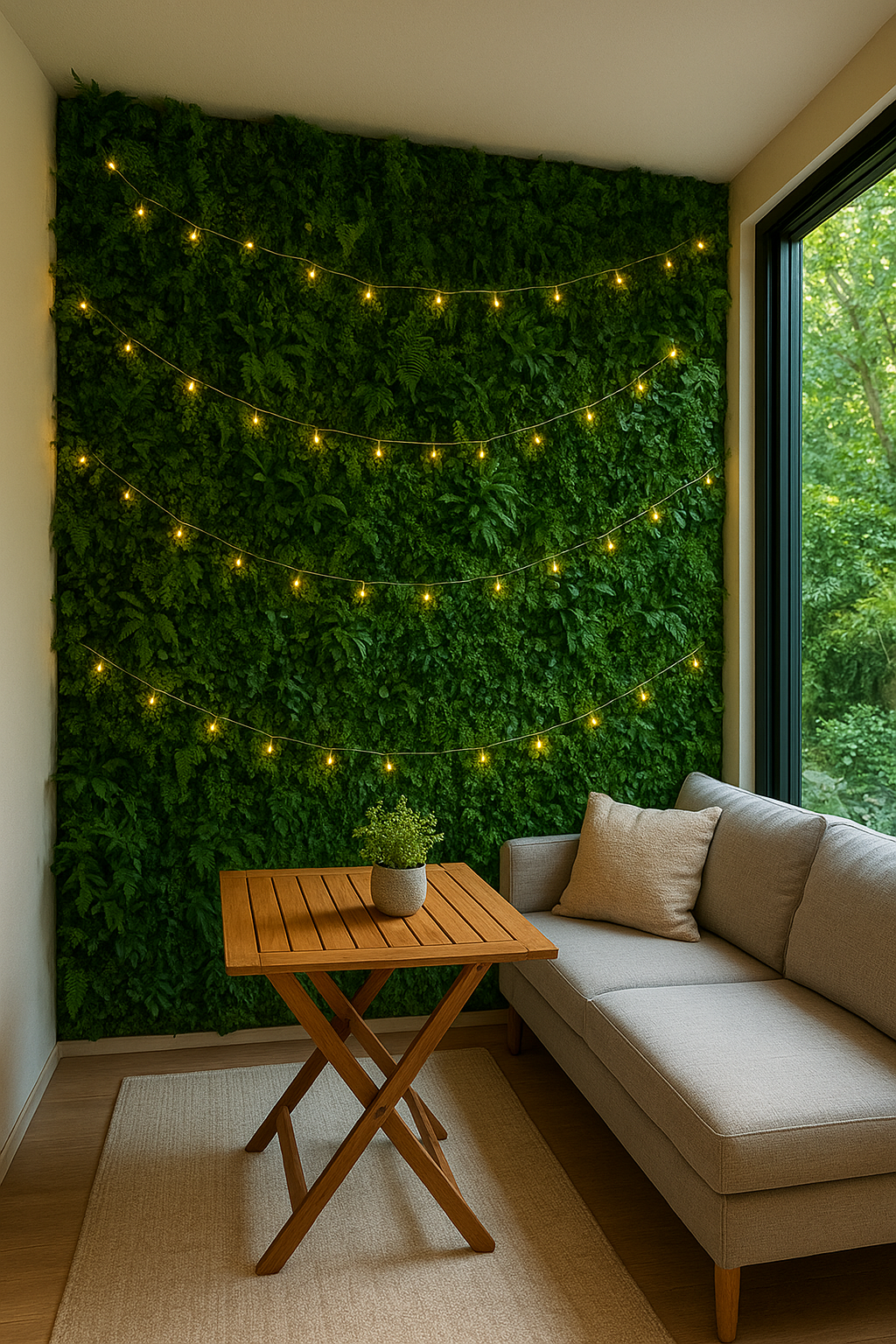
Luxury Garden Room for Elegant Living
For a touch of sophistication, a luxury garden room brings elegance and charm to your home. Imagine velvet armchairs, a chandelier, and a gold-accented coffee table surrounded by tall indoor plants. Floor-to-ceiling windows overlooking lush greenery complete the high-end look. This style is perfect for entertaining guests or creating a stylish retreat for yourself.
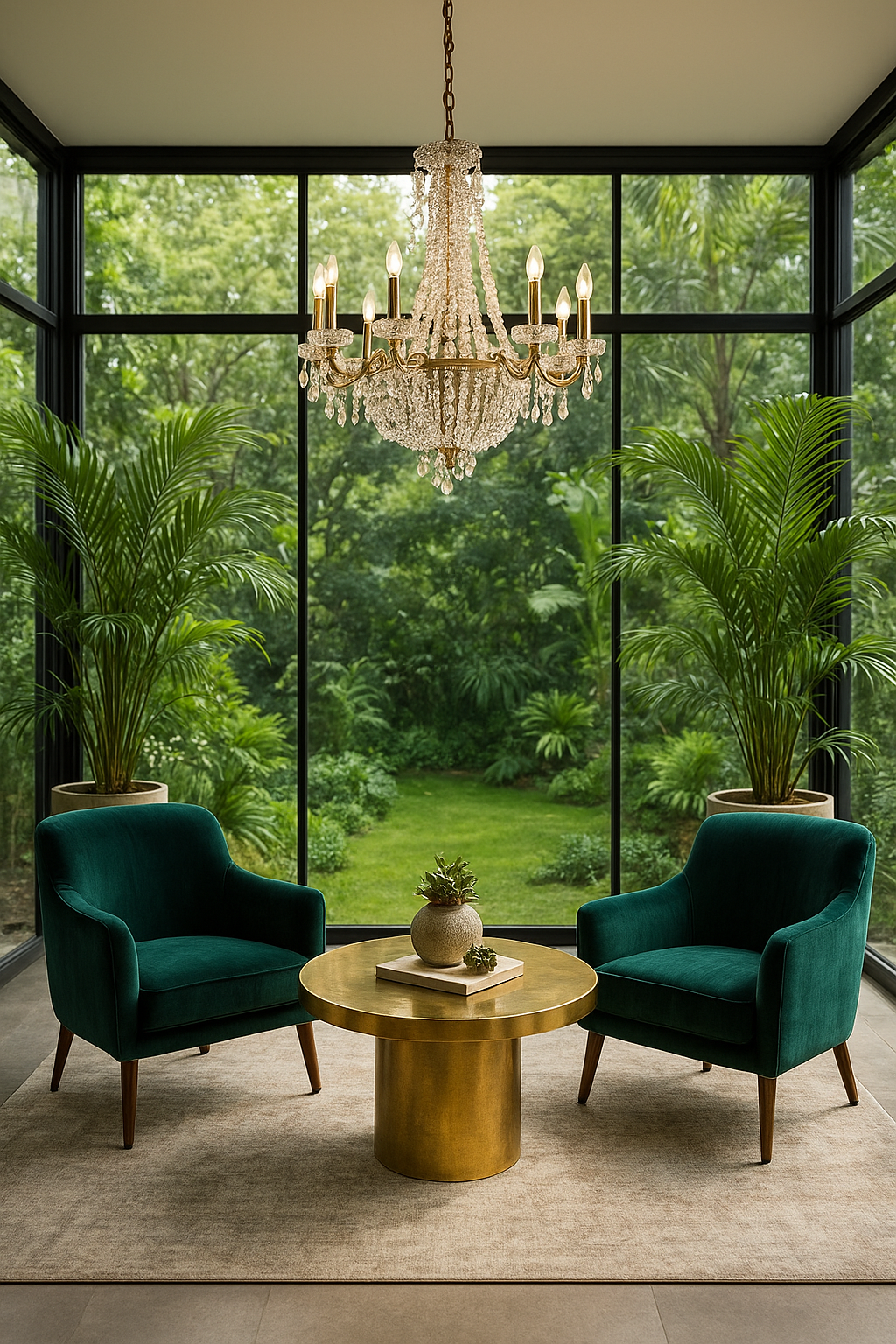
How to Style Your Garden Room
Bring in Nature: Use potted plants, indoor trees, or even a green wall to blur the line between indoors and outdoors.
Layer Textures: Combine wood, linen, rattan, and velvet for a rich, inviting feel.
Maximize Light: Choose large windows or glass walls to flood the room with natural sunlight.
Personalize It: Add throws, bookshelves, or artwork to reflect your personal style.
Functional Furniture: Opt for storage-friendly and multifunctional pieces to keep the space clutter-free.
Final Thoughts
A well-designed garden room can become the most loved space in your home. Whether you want a cozy nook, a minimalist retreat, a small yet functional escape, or a luxurious entertaining area, the possibilities are endless. By experimenting with textures, greenery, and layouts, you can find garden room ideas that perfectly fit your lifestyle.
Transform your home with a garden room that connects you to nature while offering style and comfort.
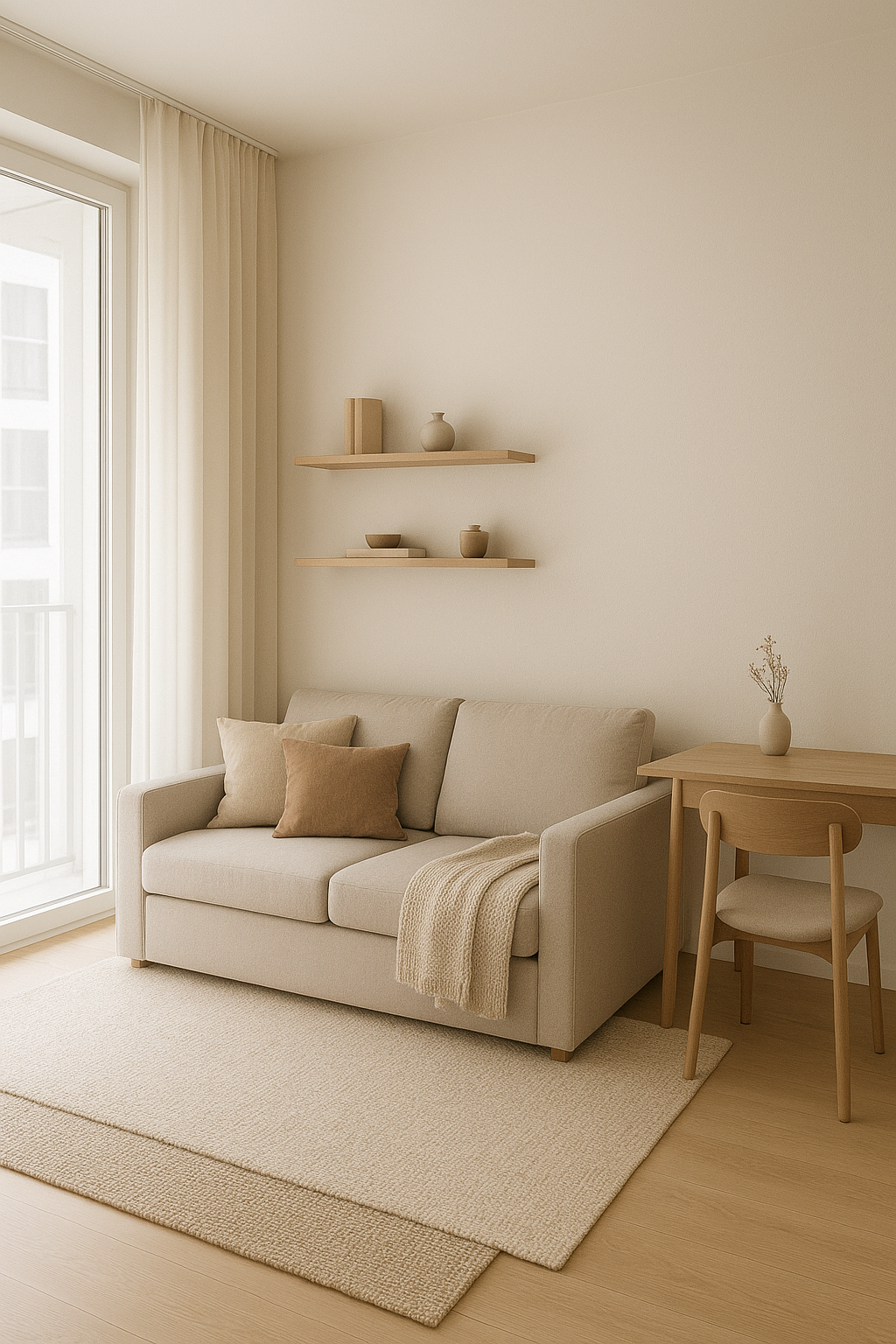
Small Space Living: Smart Ideas to Maximize Style and Function
Living in a compact home doesn’t mean you have to compromise on comfort or style. In fact, with the right planning, small space living can be both beautiful and practical. Whether you’re in a studio apartment, a tiny home, or just a cozy city flat, smart design choices make all the difference. From multifunctional furniture to clever storage hacks, here are creative ways to transform limited square footage into a stylish and functional retreat.
1. Smart Storage Solutions
One of the biggest challenges of small space living is storage. The secret is to think vertically and use every nook and cranny. Floating shelves, under-bed drawers, and wall-mounted cabinets can free up valuable floor space. Consider furniture with hidden storage, like ottomans that double as bins or coffee tables with shelves underneath.
Another great hack is using over-the-door organizers for shoes, cleaning supplies, or pantry items. By keeping things off the floor and neatly tucked away, your space instantly feels more open and airy.
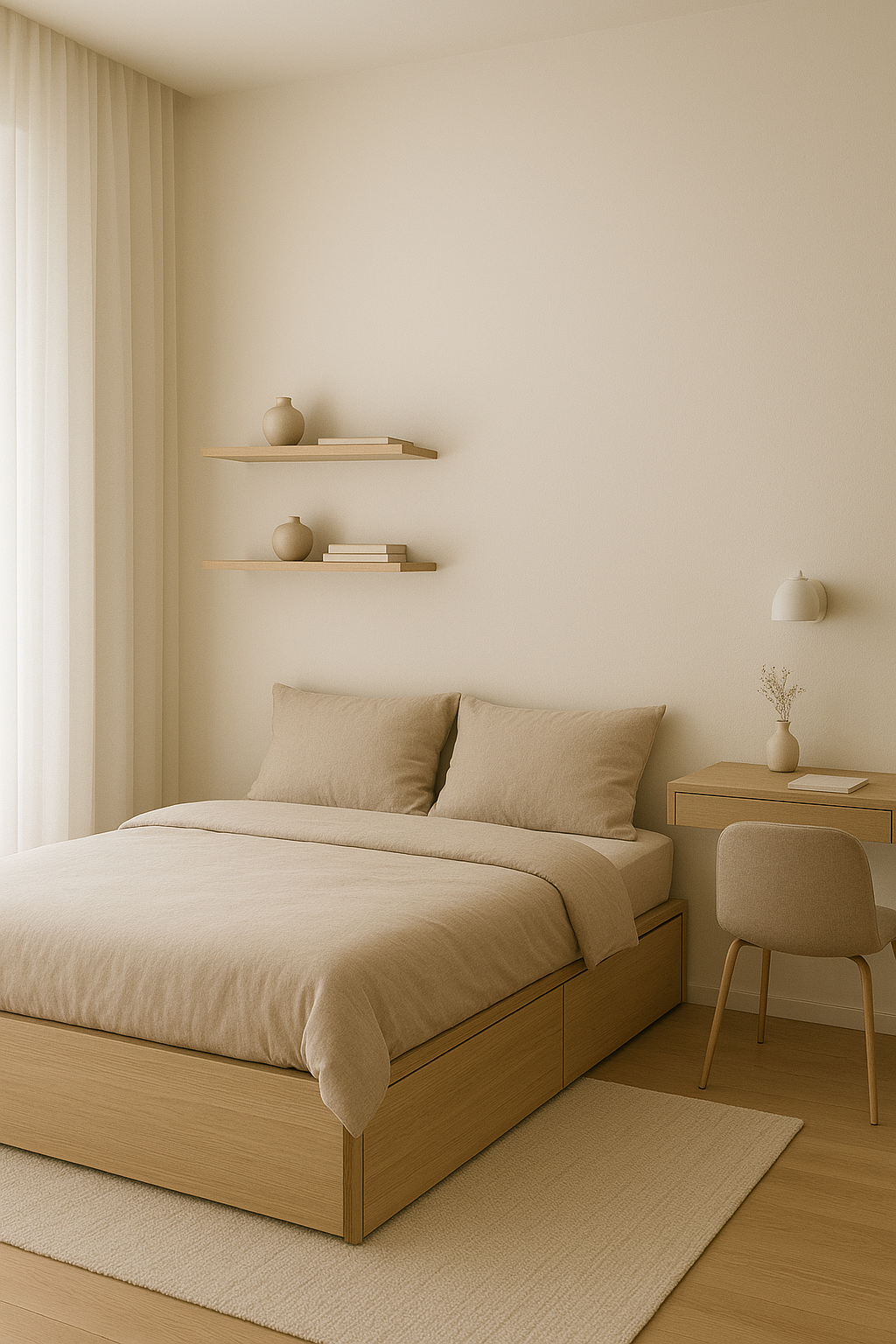
2. Small Living Room Layouts That Work
When it comes to designing a small living room, every inch counts. A slim sofa against the wall can save space while creating a comfortable seating area. Nesting coffee tables are a stylish solution—they can be spread out when needed and tucked away when not.
Using light-colored rugs and sheer curtains helps reflect light, making the room appear larger. Adding mirrors is another classic trick for giving the illusion of more space. Finally, incorporating greenery like potted plants adds freshness without overwhelming the layout.
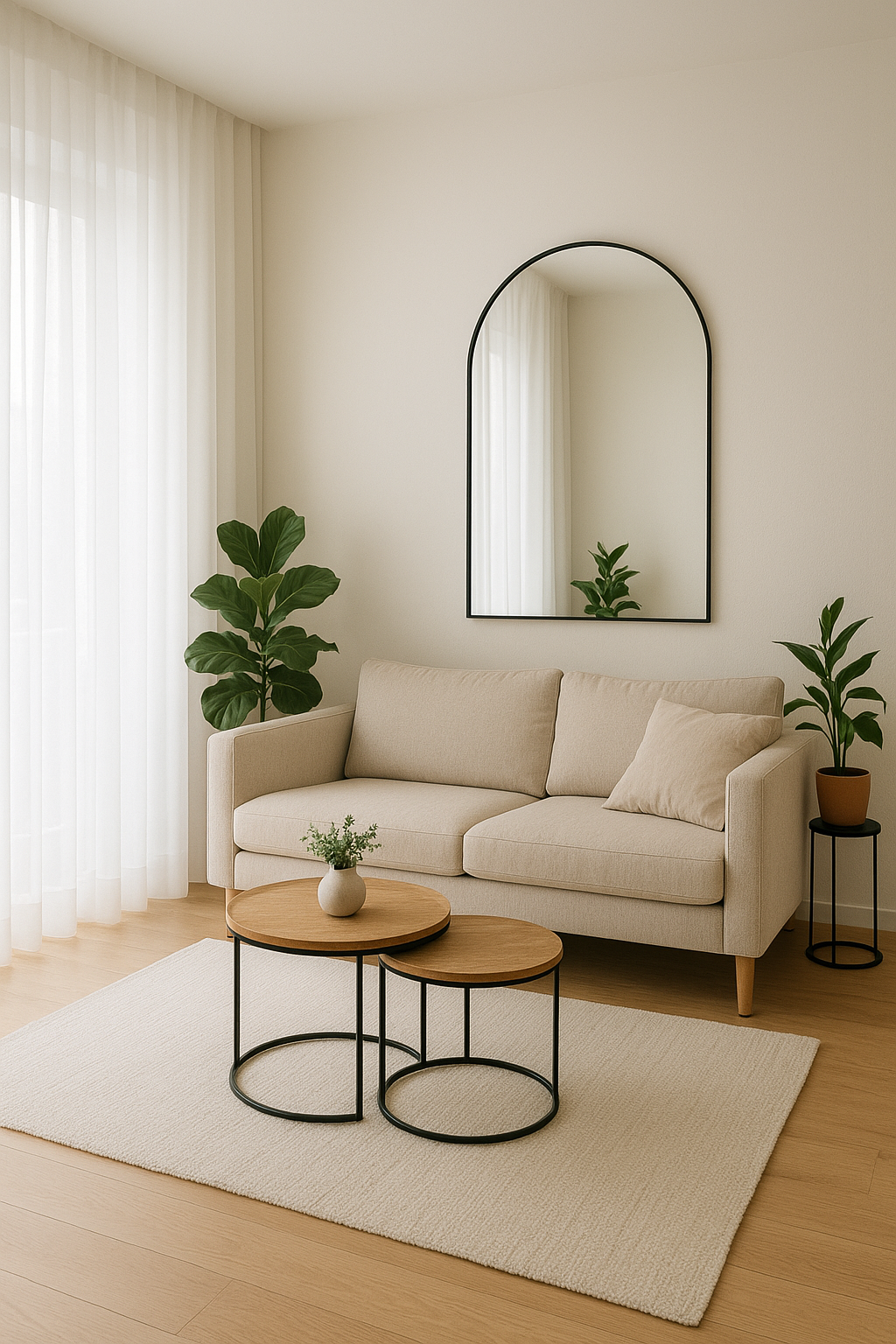
3. Creating a Cozy Small Bedroom
A bedroom should feel like a peaceful retreat, no matter its size. For small bedrooms, choose a bed with built-in storage drawers or opt for a loft-style bed to free up floor space underneath. Wall-mounted lamps or sconces can replace bulky bedside tables, leaving more room for movement.
Layering soft textiles—like plush throws, pastel bedding, and rugs—adds comfort and personality. Keeping a cohesive color palette of neutrals and soft tones will make the room feel calm and airy.
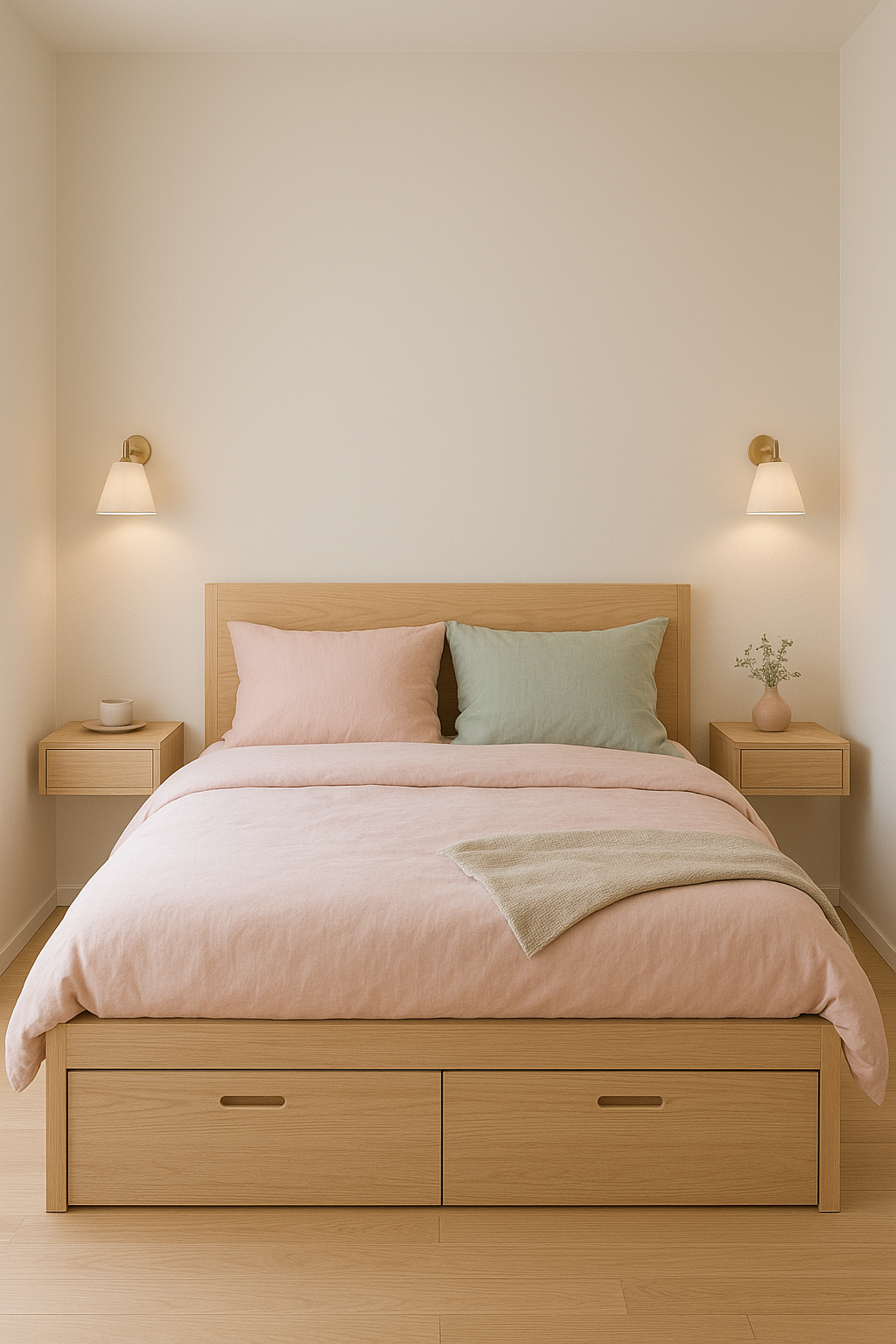
4. Designing a Stylish Small Kitchen
Even a compact kitchen can be both functional and chic. Use vertical wall space with open shelves or pegboards for storing utensils, pots, and pans. Magnetic strips for knives and wall-mounted spice racks keep countertops clear and clutter-free.
Under-cabinet lighting not only improves visibility but also makes the kitchen appear larger. Stick with light-colored cabinetry for a spacious feel, and add natural touches like potted herbs for a fresh, cozy vibe.
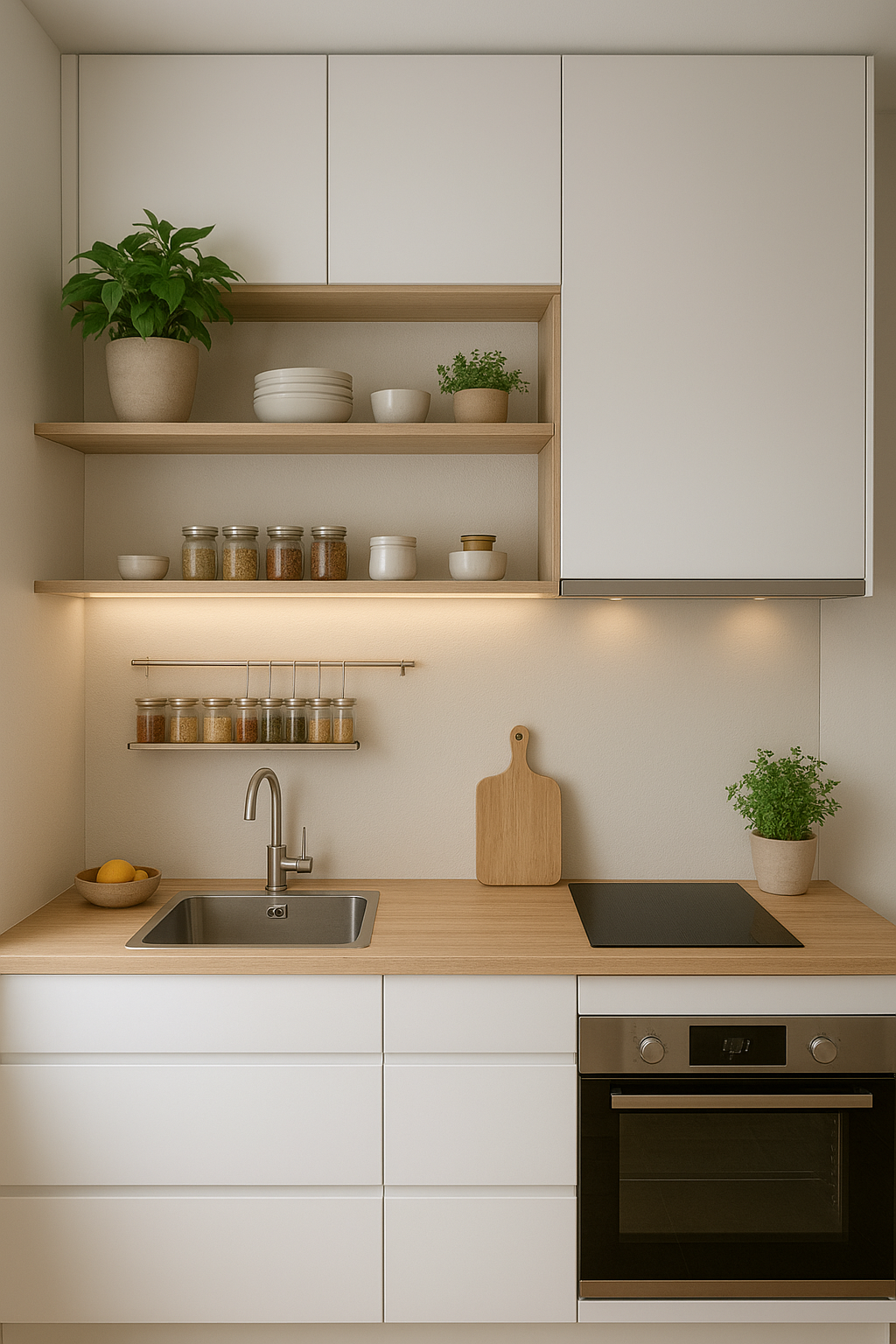
5. Decorating a Tiny Apartment with Personality
A tiny apartment doesn’t mean giving up on personal style. The key is choosing multi-functional furniture, such as a foldable dining table or a sleeper sofa. Adding wall art or a decorative mirror makes the space feel curated and stylish.
Layered rugs and cozy textiles create warmth, while minimal clutter ensures the apartment remains open and inviting. Always prioritize quality over quantity—fewer well-chosen pieces will make your small space feel intentional rather than cramped.
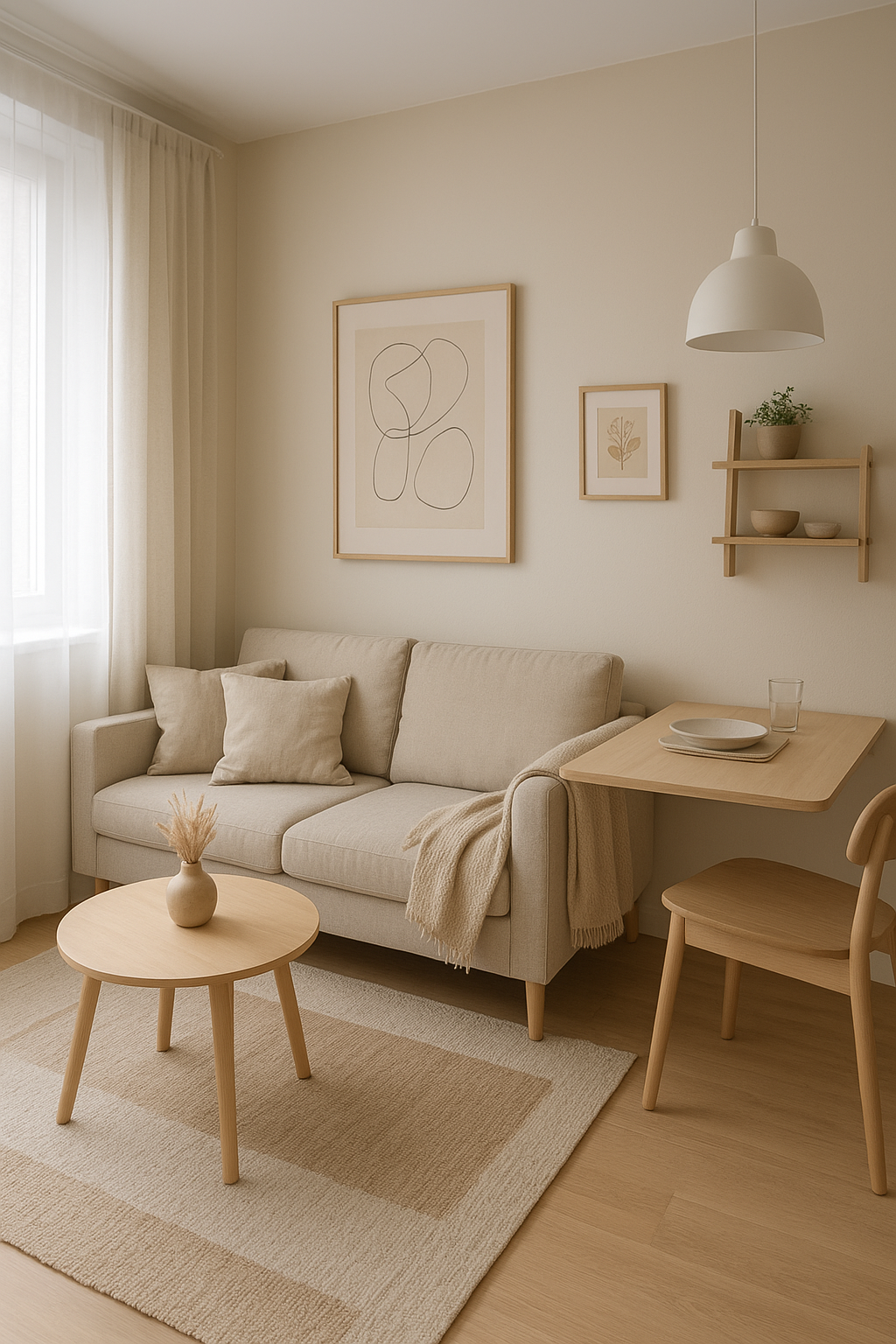
Final Thoughts
Small space living is all about creativity and smart design choices. By maximizing vertical storage, choosing multifunctional furniture, and sticking with a cohesive style, you can turn even the tiniest home into a beautiful, comfortable retreat. Instead of seeing small spaces as a limitation, embrace them as an opportunity to simplify, personalize, and create a cozy environment you’ll love coming home to.
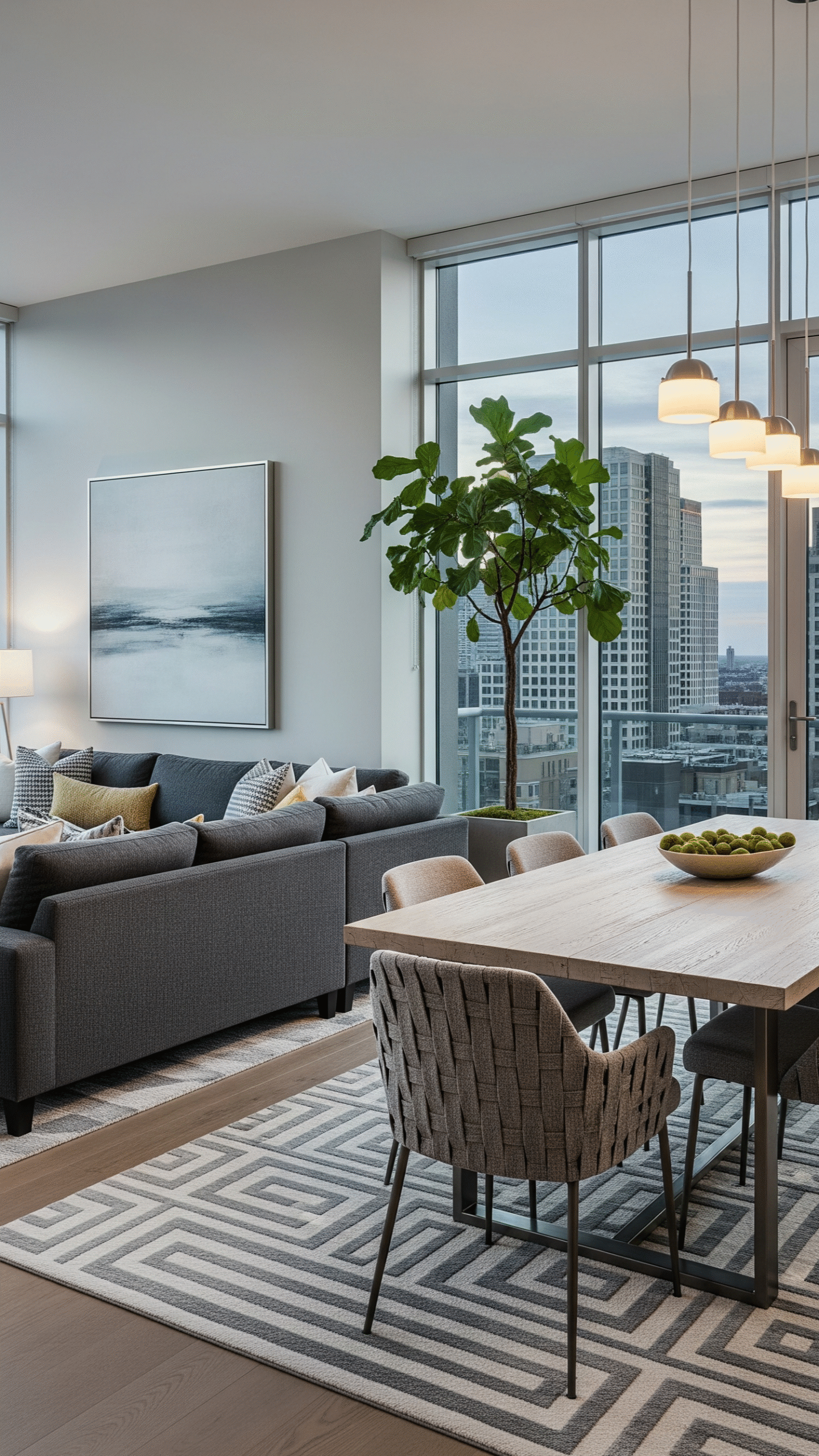
Living Room Dining Room Combo Ideas to Maximize Your Space
When you live in a home with limited square footage, combining areas is often the smartest way to make the most of what you have. One of the most popular and practical solutions is creating a living room dining room combo. This design approach not only saves space but also enhances flow, encourages connection, and gives your home a cohesive look. Whether you live in a compact apartment, a townhouse, or even a larger home, this layout can be both functional and stylish when planned thoughtfully.
In this article, we’ll explore practical tips and design inspiration to help you create a living room dining room combo that feels spacious, comfortable, and beautiful.
1. Define Spaces with Rugs and Furniture Placement
When two rooms share one area, clear visual boundaries are essential. Rugs are one of the simplest ways to define each zone. A large area rug under the sofa can distinguish the living room, while a smaller rug beneath the dining table marks the eating space. Similarly, thoughtful furniture placement can create a natural separation. For instance, placing the back of a sofa toward the dining area subtly divides the two sections without closing off the space.
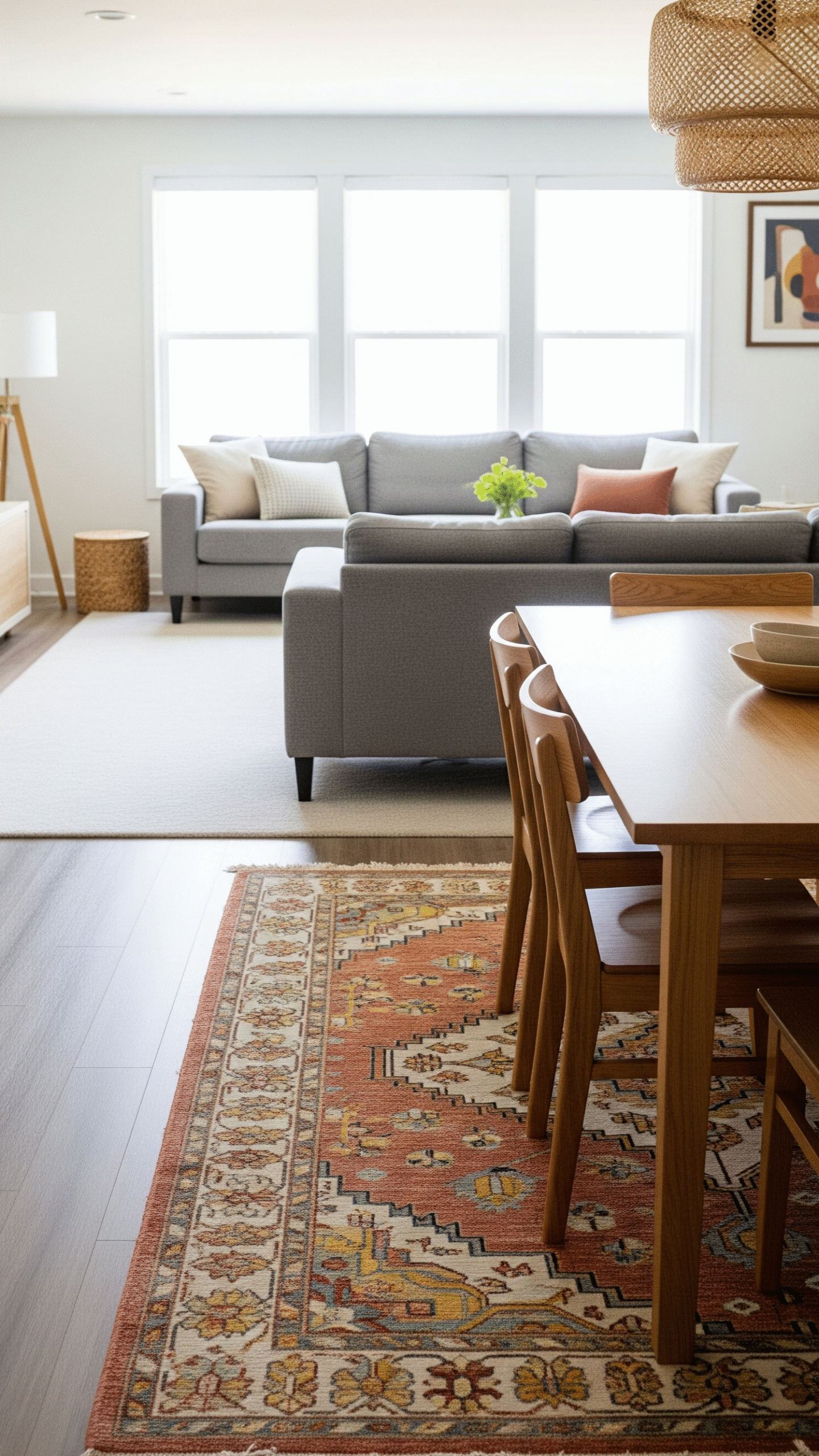
2. Choose a Cohesive Color Palette
The key to a seamless living room dining room combo is unity. Select a consistent color palette for walls, furniture, and decor that ties both spaces together. Neutral tones such as white, beige, and gray work beautifully to create an open, airy atmosphere. You can then add pops of color with throw pillows, dining chairs, or wall art. For a bold statement, consider an accent wall that visually connects the two areas.
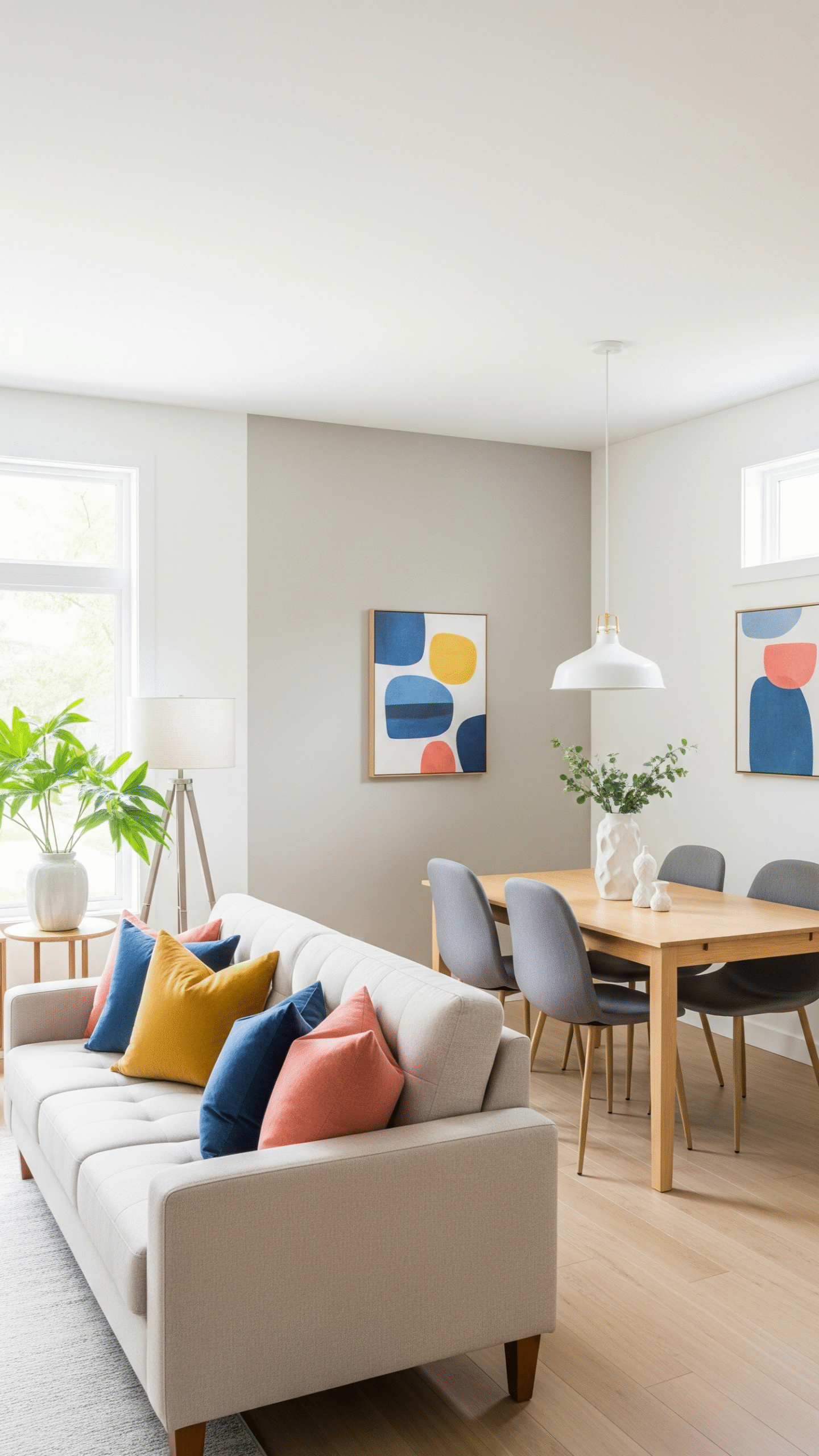
3. Use Multi-Functional Furniture
In small spaces, multi-functional furniture is your best friend. A dining table that doubles as a work desk or a sofa with hidden storage can make your combo space more efficient. Extendable dining tables are another great option, allowing you to expand for guests but save space when it’s just the family. Similarly, a slim console table can serve as a room divider, a buffet, and even a home office desk when needed.
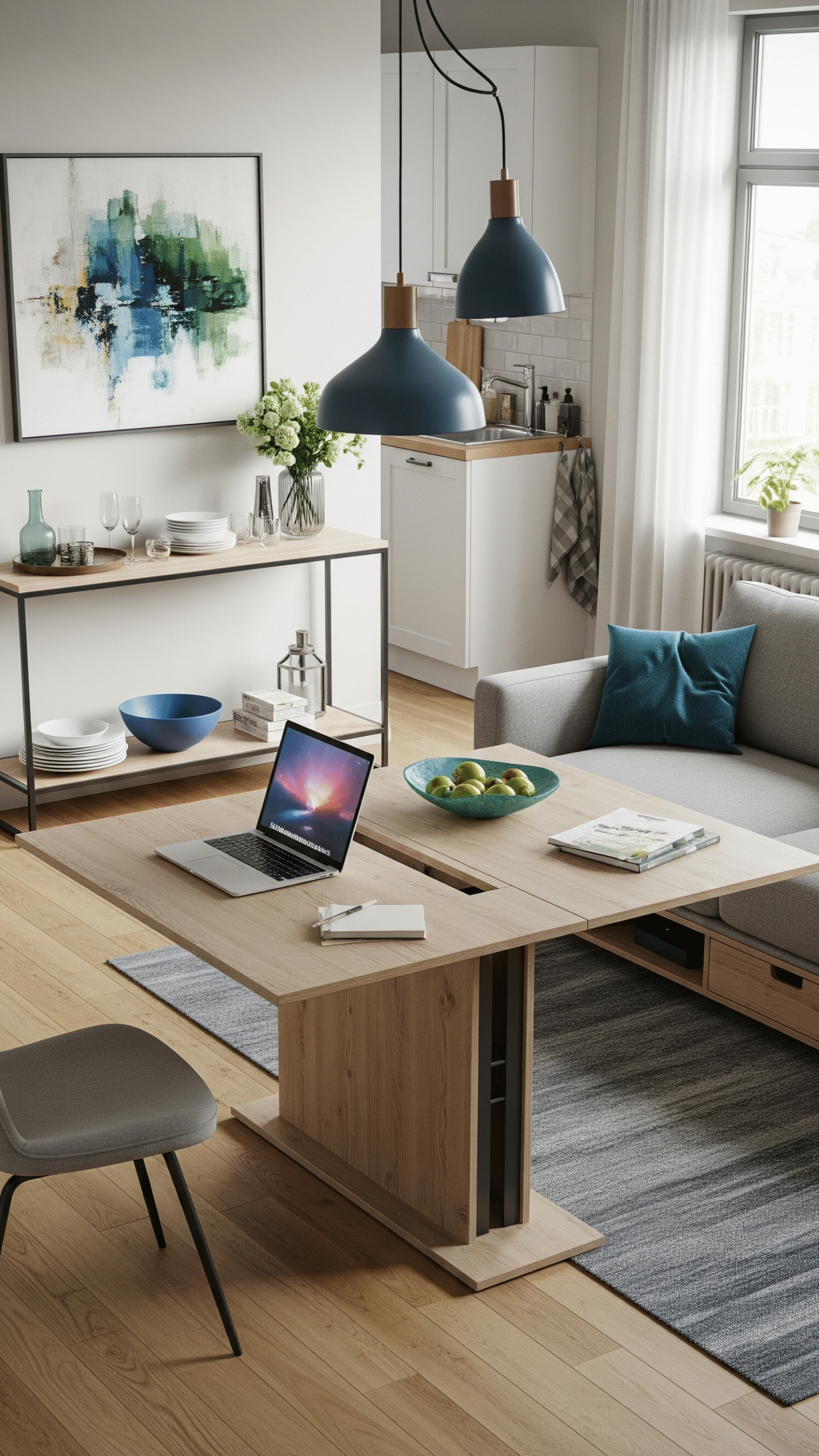
4. Incorporate Lighting for Ambience and Function
Lighting plays a huge role in defining spaces. Use a statement chandelier or pendant above the dining table to anchor that area, and softer ambient lighting such as floor lamps or sconces in the living room. This layered approach not only enhances the atmosphere but also helps create zones within the same open space.
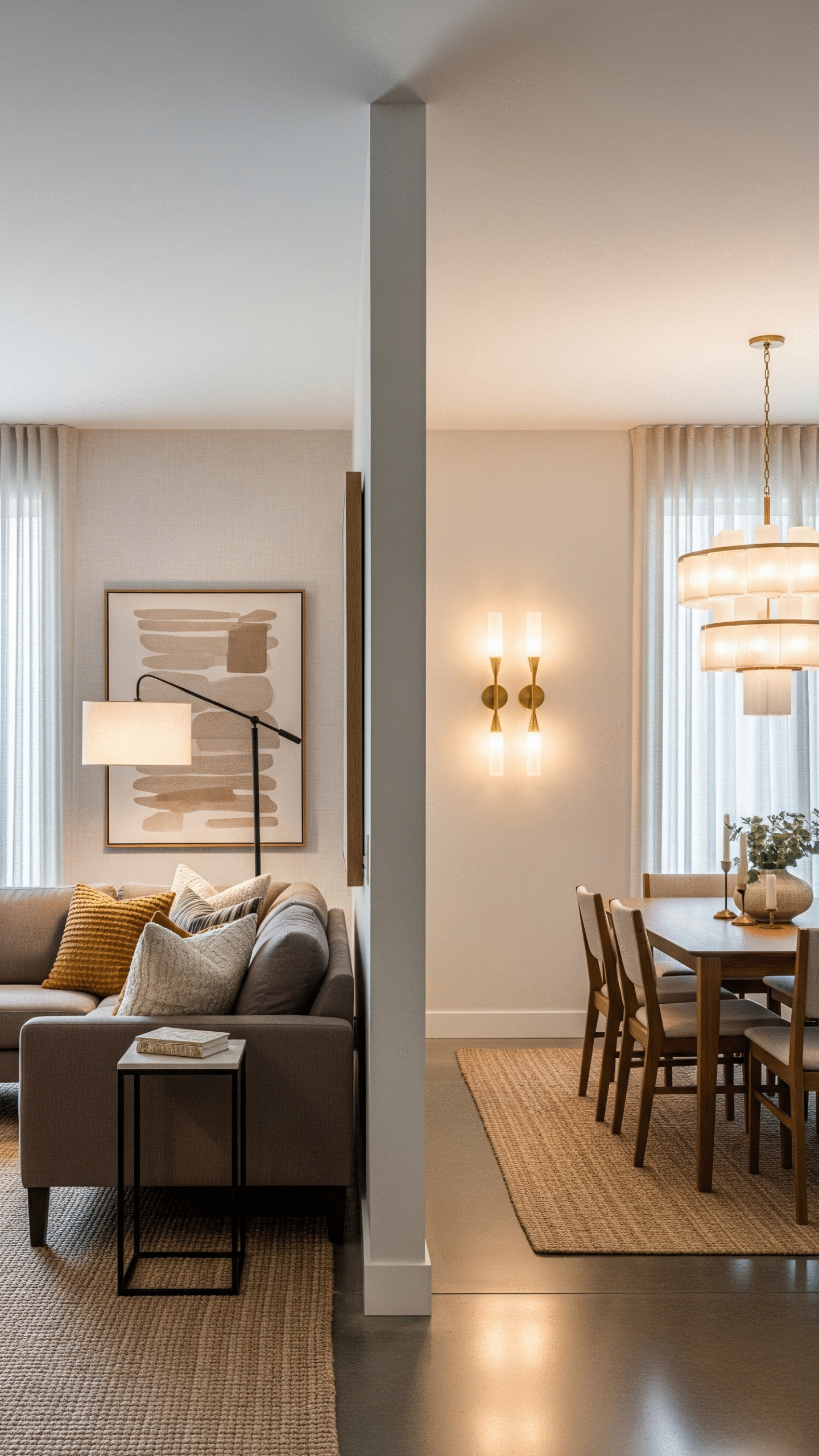
5. Keep the Layout Open and Uncluttered
One of the biggest mistakes in designing a living room dining room combo is overcrowding the area with too much furniture. Opt for streamlined pieces that balance style and function without overwhelming the space. Keep walkways clear, and avoid bulky furniture that blocks the natural flow of movement. Floating shelves, wall-mounted storage, and foldable furniture can keep things light and airy.
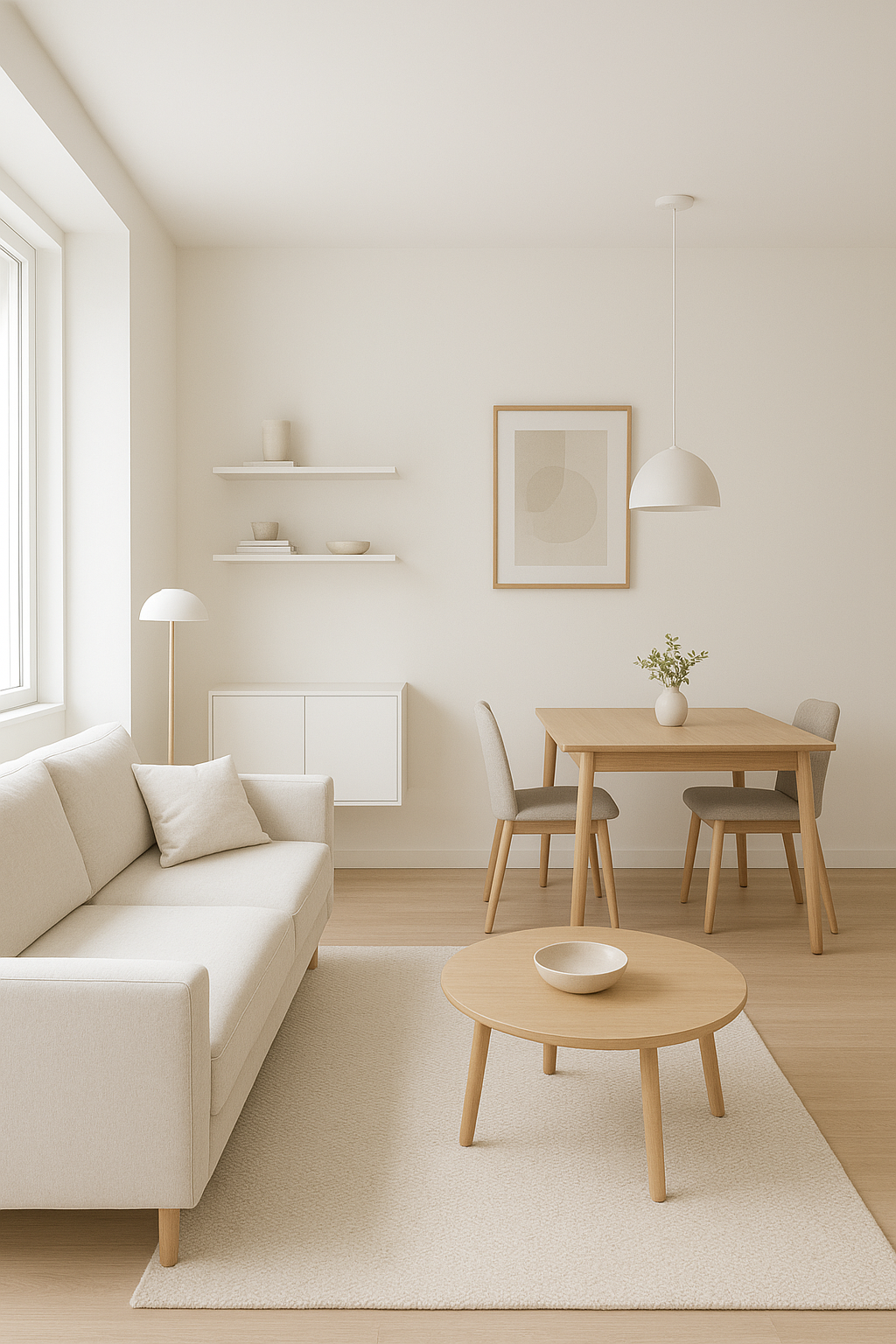
6. Add Personality with Decor
While functionality is key, don’t forget to add personality. Use artwork, mirrors, plants, and textiles to make the space feel warm and inviting. A large mirror can reflect light and make the room feel larger, while greenery adds freshness. Coordinating artwork between the dining and living areas can also visually tie them together.
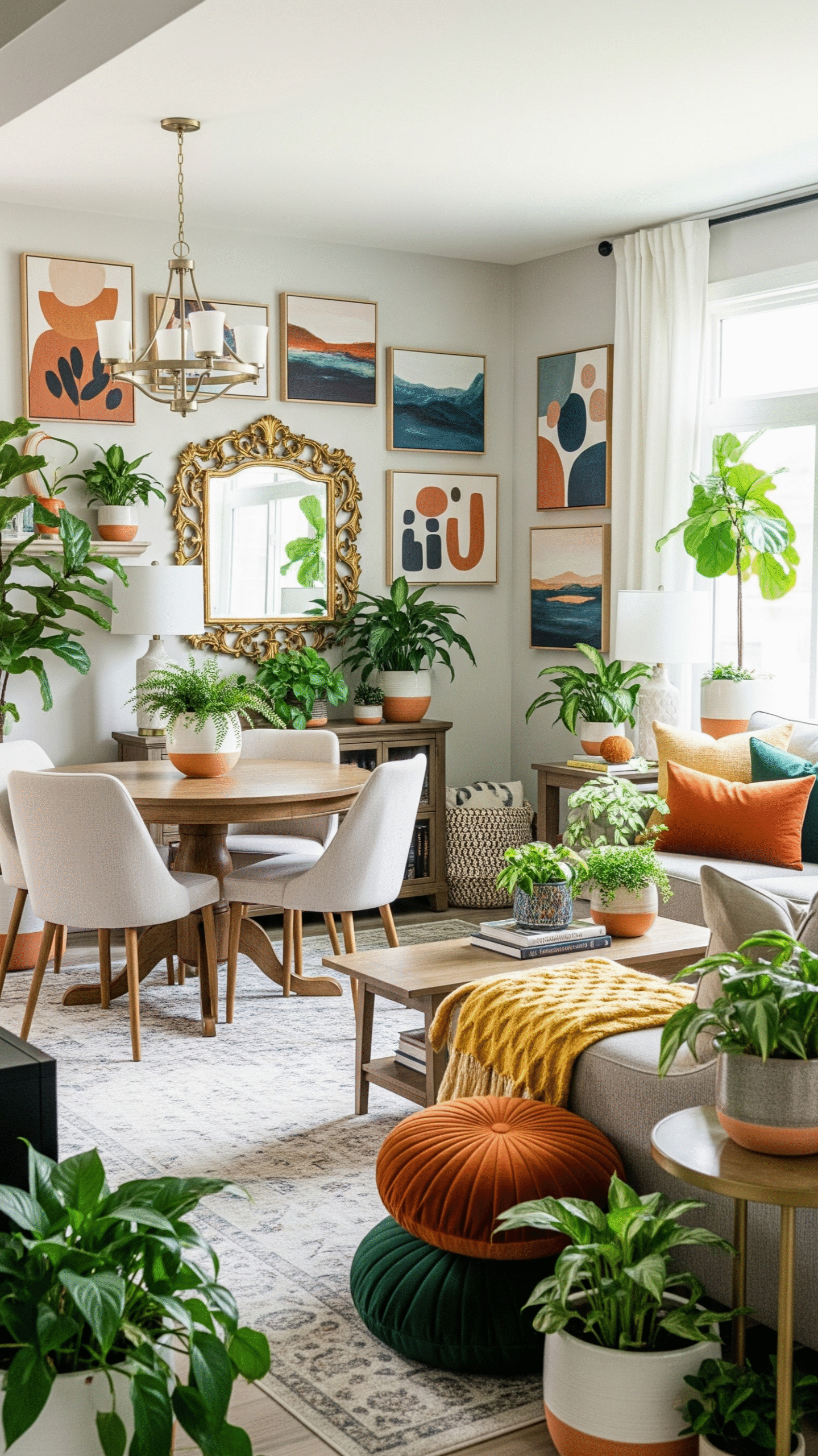
7. Create a Focal Point
Every space benefits from a focal point. In a living room dining combo, you might choose a fireplace, a statement wall, or even a bold piece of art as the anchor. From there, design your layout to highlight this feature while keeping both spaces connected.
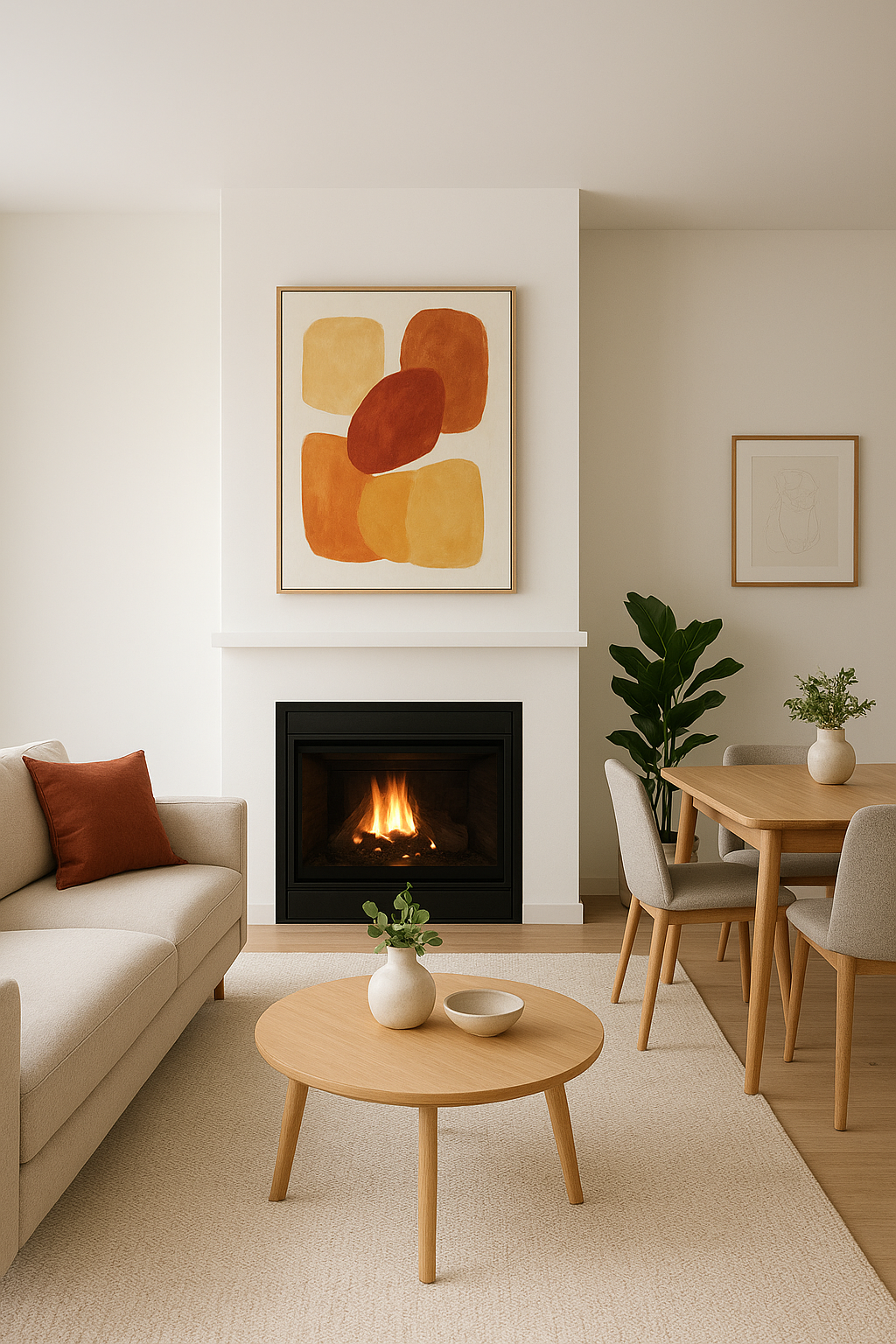
Conclusion
Designing a living room dining room combo is all about balance. By defining zones with rugs, using a cohesive color palette, incorporating multifunctional furniture, and layering lighting, you can create a space that feels harmonious and stylish. With the right choices, even a compact home can offer comfort, beauty, and functionality.
Whether you want a cozy, rustic vibe or a sleek, modern look, these ideas can help you maximize your space while reflecting your personal style. Remember, the best designs are those that make everyday living easier and more enjoyable.
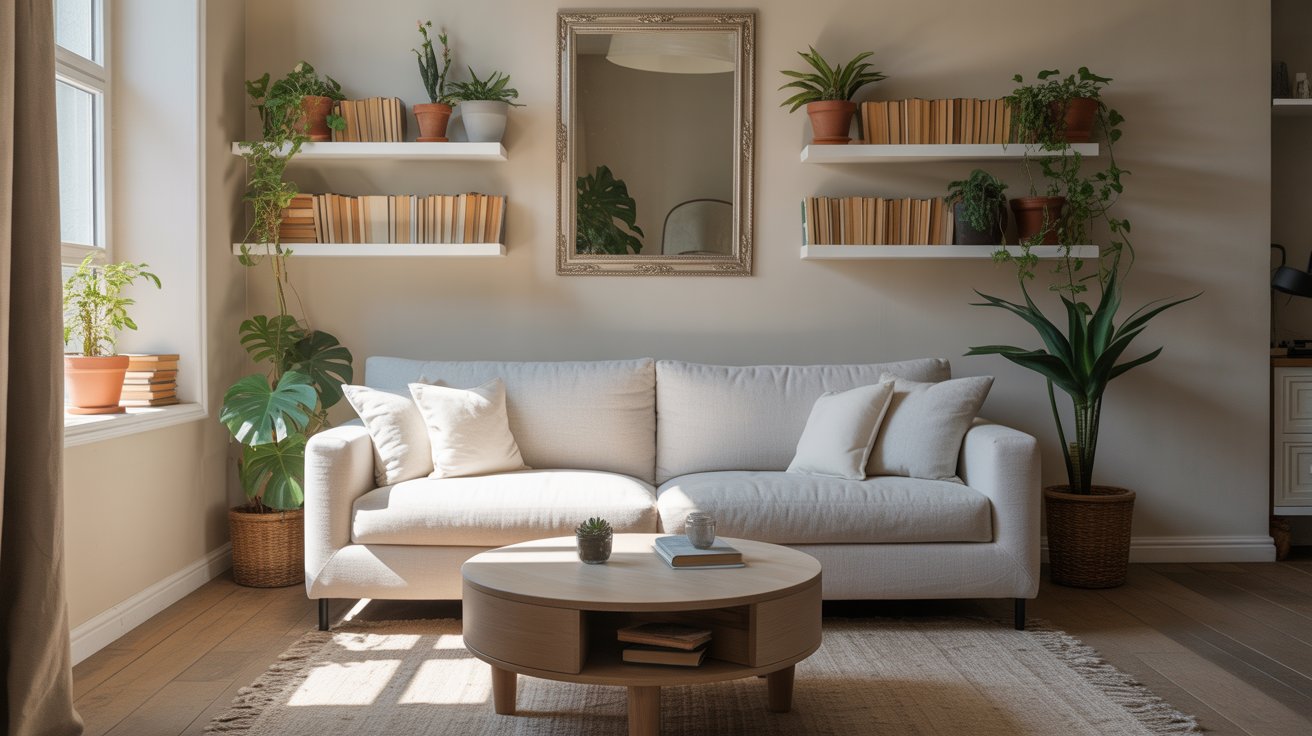
Small Living Room Ideas to Maximize Style and Space
When it comes to home design, small living rooms can feel tricky to decorate. Limited square footage often leads to clutter, awkward layouts, and a cramped atmosphere. But with a few smart choices, you can transform even the tiniest living area into a stylish and functional retreat. In this article, we’ll share the best small living room ideas that help you maximize space without sacrificing comfort or personality.
1. Choose the Right Furniture
The furniture you select plays the most important role in shaping your small living room. Avoid oversized pieces that dominate the space. Instead, opt for slim-profile sofas, armchairs with exposed legs, or modular sectionals that can fit snugly against a wall. Multipurpose furniture like sofa beds, nesting tables, and ottomans with hidden storage are excellent for saving space.
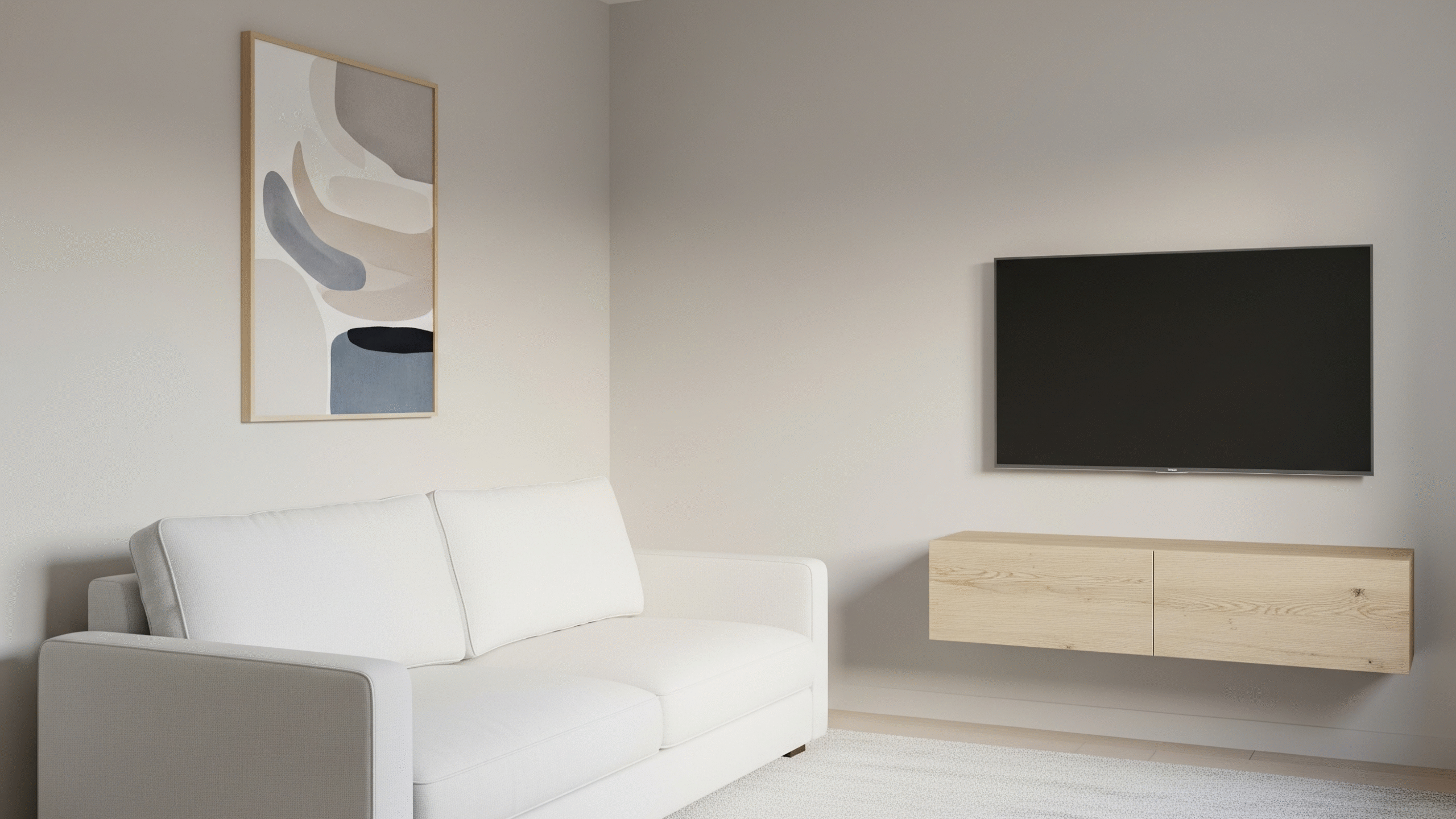
2. Embrace Minimalist Design
Clutter can quickly overwhelm a small living room. That’s why minimalist design works beautifully in compact spaces. Stick to neutral tones like beige, gray, and white, and add warmth with natural textures such as wood, rattan, or linen. Keep decorations simple—a single piece of wall art, a few well-placed plants, or a textured rug can make the space feel balanced without being busy.
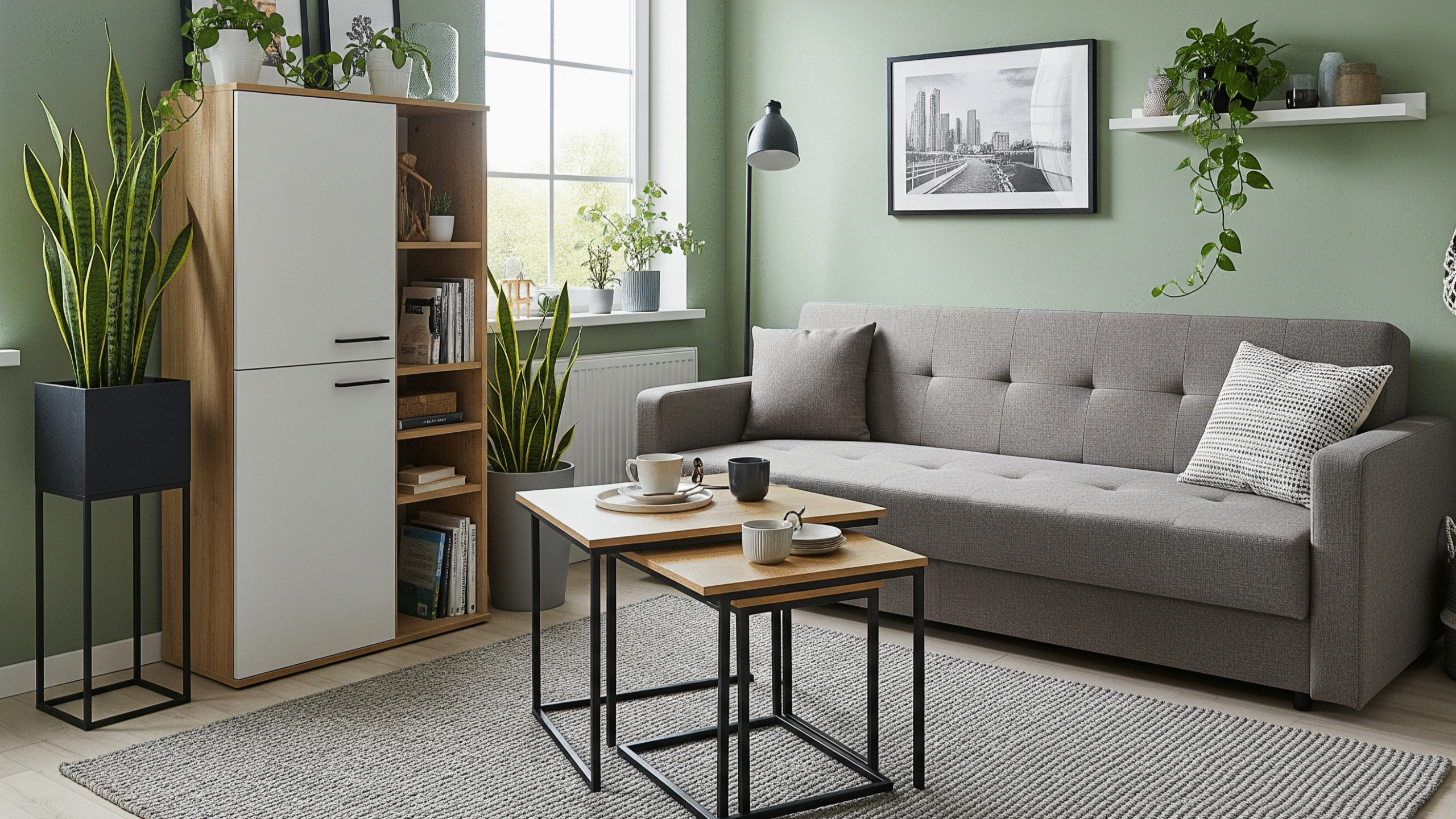
3. Use Vertical Space Wisely
When floor space is limited, vertical space becomes your best friend. Install floating shelves for books and plants, hang decorative wall baskets, or use tall storage cabinets that draw the eye upward. Wall-mounted TVs and media consoles are another great way to keep the floor area clear and create a sense of openness.
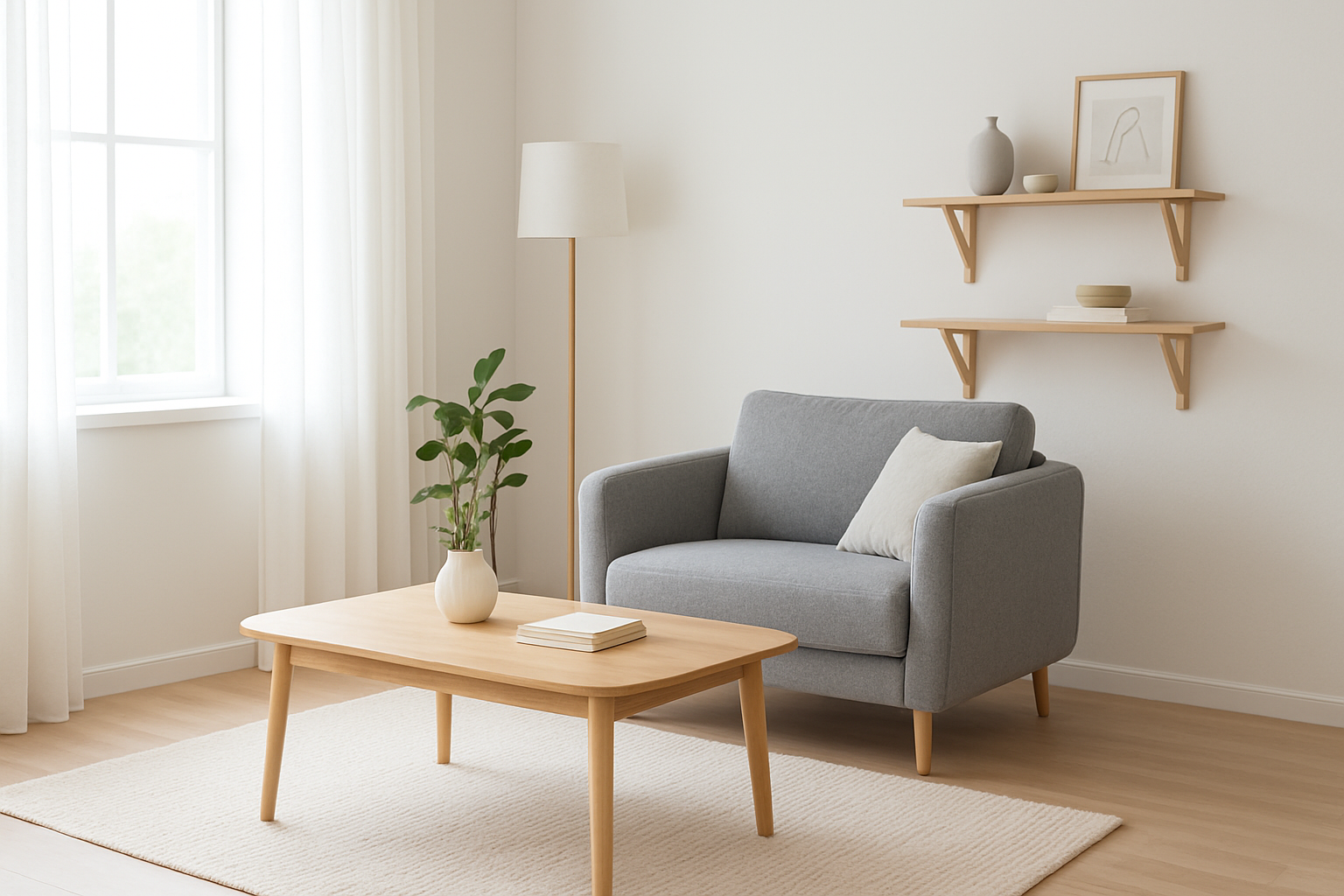
4. Create the Illusion of Space with Light
Lighting has a powerful effect on how large or small a room feels. Natural light is always best, so avoid heavy drapes that block windows. Instead, choose sheer curtains that let the sunlight pour in. Mirrors are also an excellent tool—they reflect light and create the illusion of depth, instantly making your small living room feel bigger.
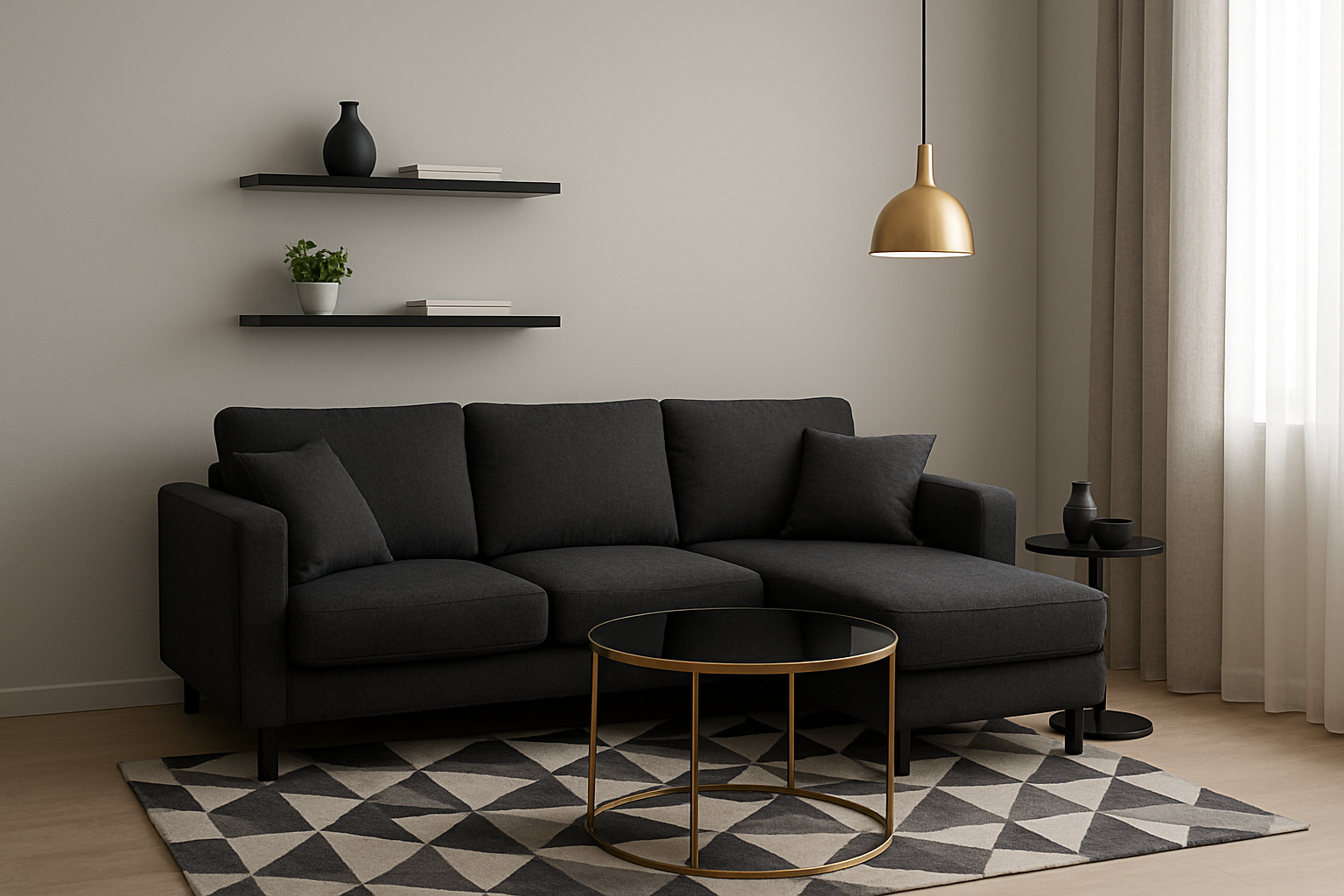
5. Play with Colors and Textures
While neutral palettes keep things airy, adding pops of color through pillows, throws, or accent chairs can bring your living room to life. Stick to lighter shades for the walls and larger furniture pieces to keep the room from feeling heavy. Textures such as knitted throws, patterned rugs, or velvet cushions add coziness without overwhelming the space.
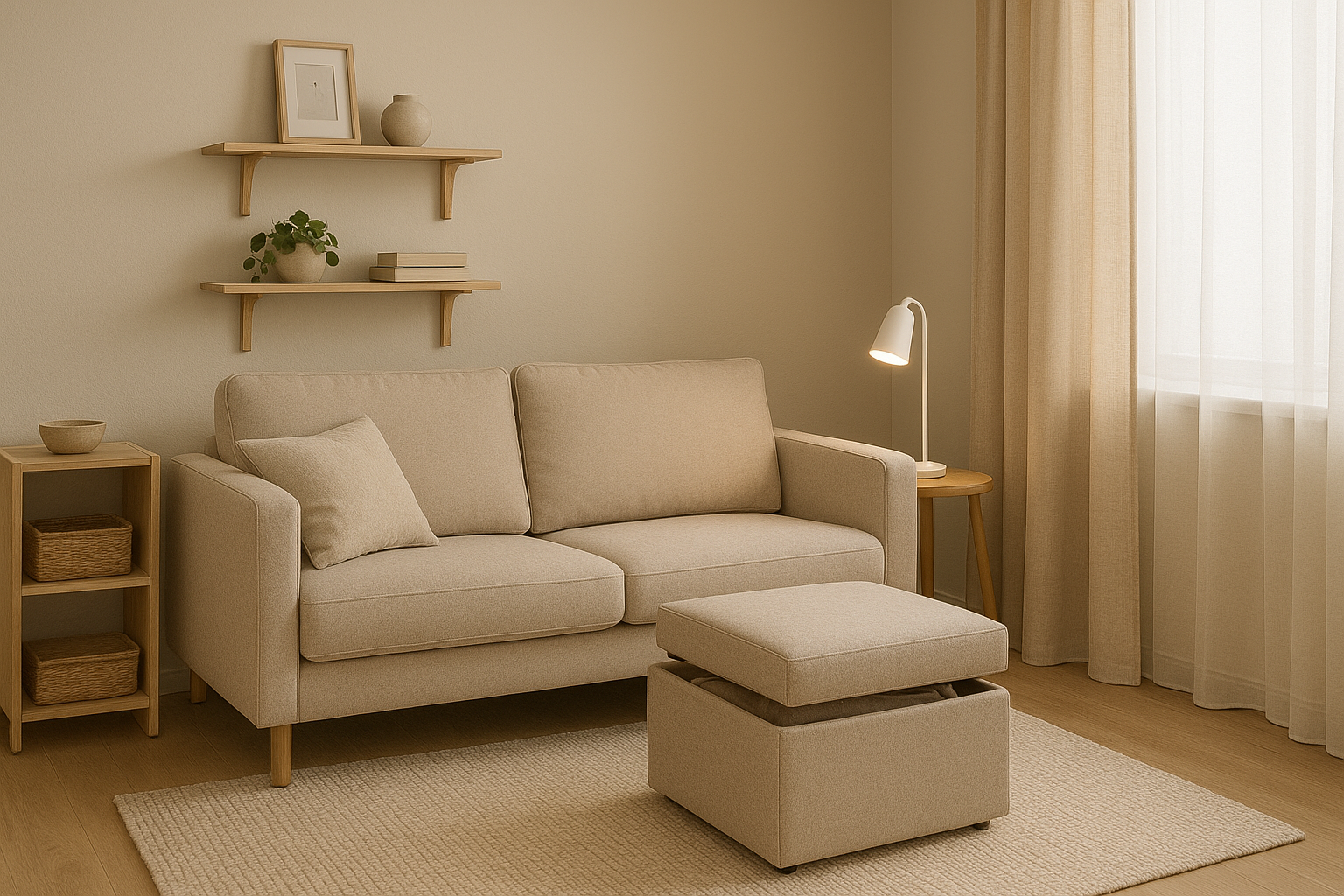
6. Go Bright and Airy
Scandinavian-inspired design is perfect for compact living rooms. Think light wood tones, white walls, and clean lines. This style emphasizes openness and simplicity, making even small areas look fresh and airy. Add indoor plants to introduce a natural touch that softens the overall look.
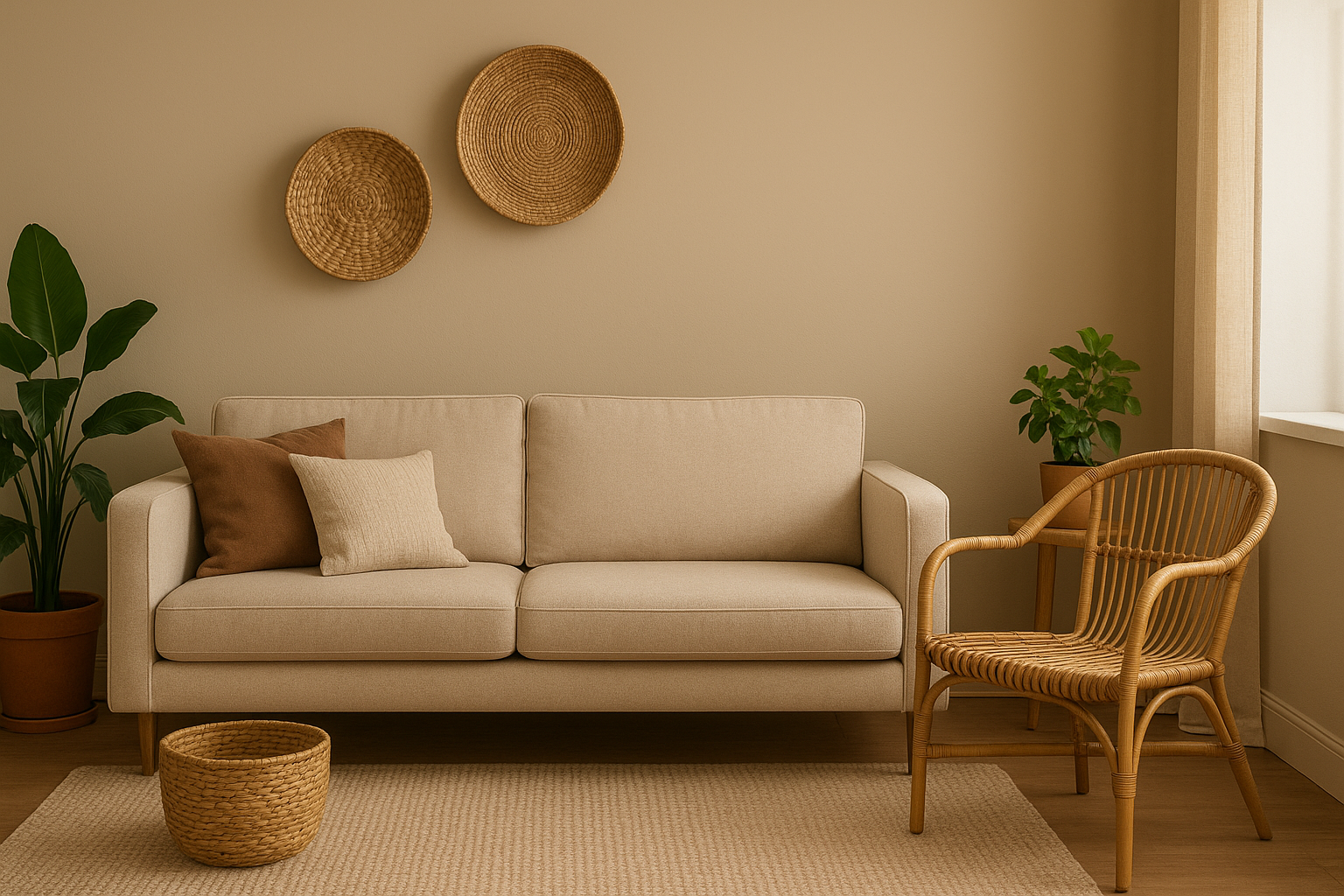
7. Don’t Forget the Personal Touch
Even the most practical design needs personality. Display a few meaningful decor pieces, such as framed family photos, unique art, or travel souvenirs. Just be mindful not to overcrowd surfaces. A small space works best when every item has both style and purpose.
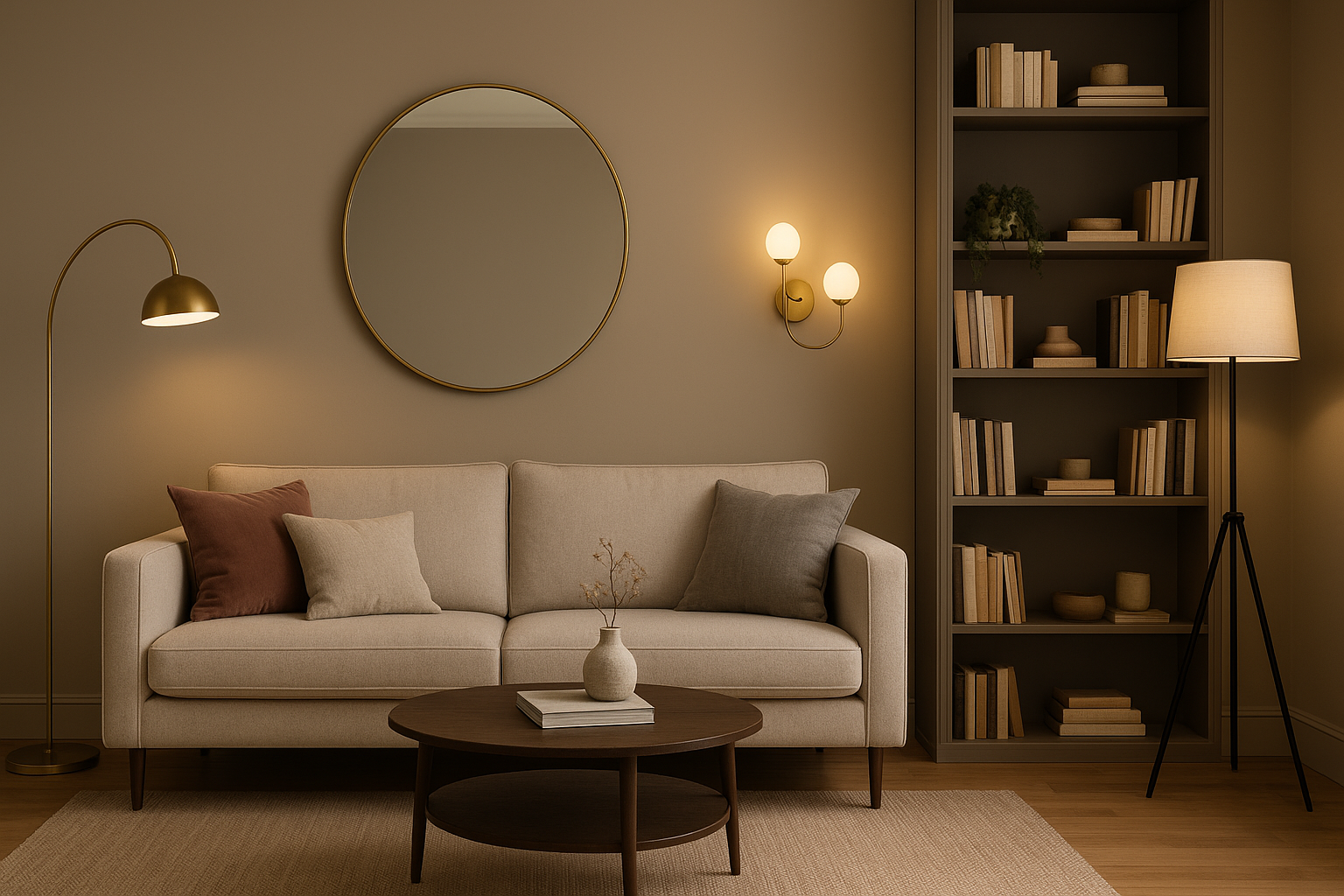
Final Thoughts
With thoughtful planning and creativity, small living rooms can be just as beautiful and inviting as larger spaces. From choosing the right furniture to maximizing natural light, these small living room ideas will help you create a home that feels cozy, stylish, and uniquely yours. Instead of feeling limited by size, embrace the challenge—sometimes the smallest rooms offer the biggest design opportunities.
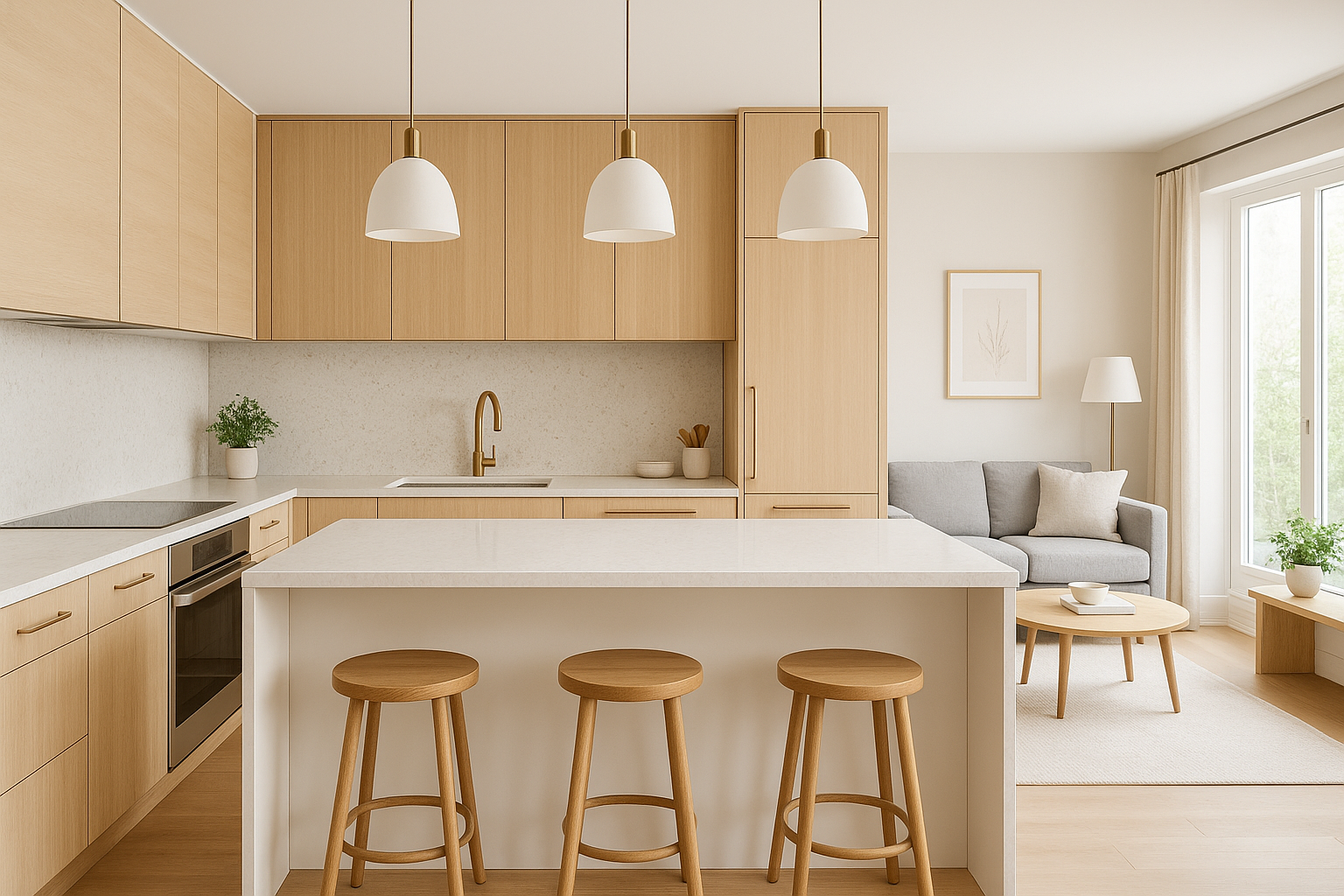
Open Kitchen Design Ideas to Transform Your Home
An open kitchen design has become one of the most sought-after layouts in modern homes. Blurring the lines between cooking, dining, and living spaces, this style offers a seamless flow that feels spacious, welcoming, and functional. Whether you’re working with a large home or a compact apartment, the right approach can make your open kitchen both stylish and practical.
1. Why Choose an Open Kitchen Design?
The main appeal of an open kitchen lies in its versatility. Without walls separating the kitchen from other living areas, the space instantly feels larger and more connected. This layout encourages social interaction — you can prepare meals while chatting with guests or supervising kids in the living area. Plus, open kitchens maximize natural light, making your home feel brighter and more inviting.
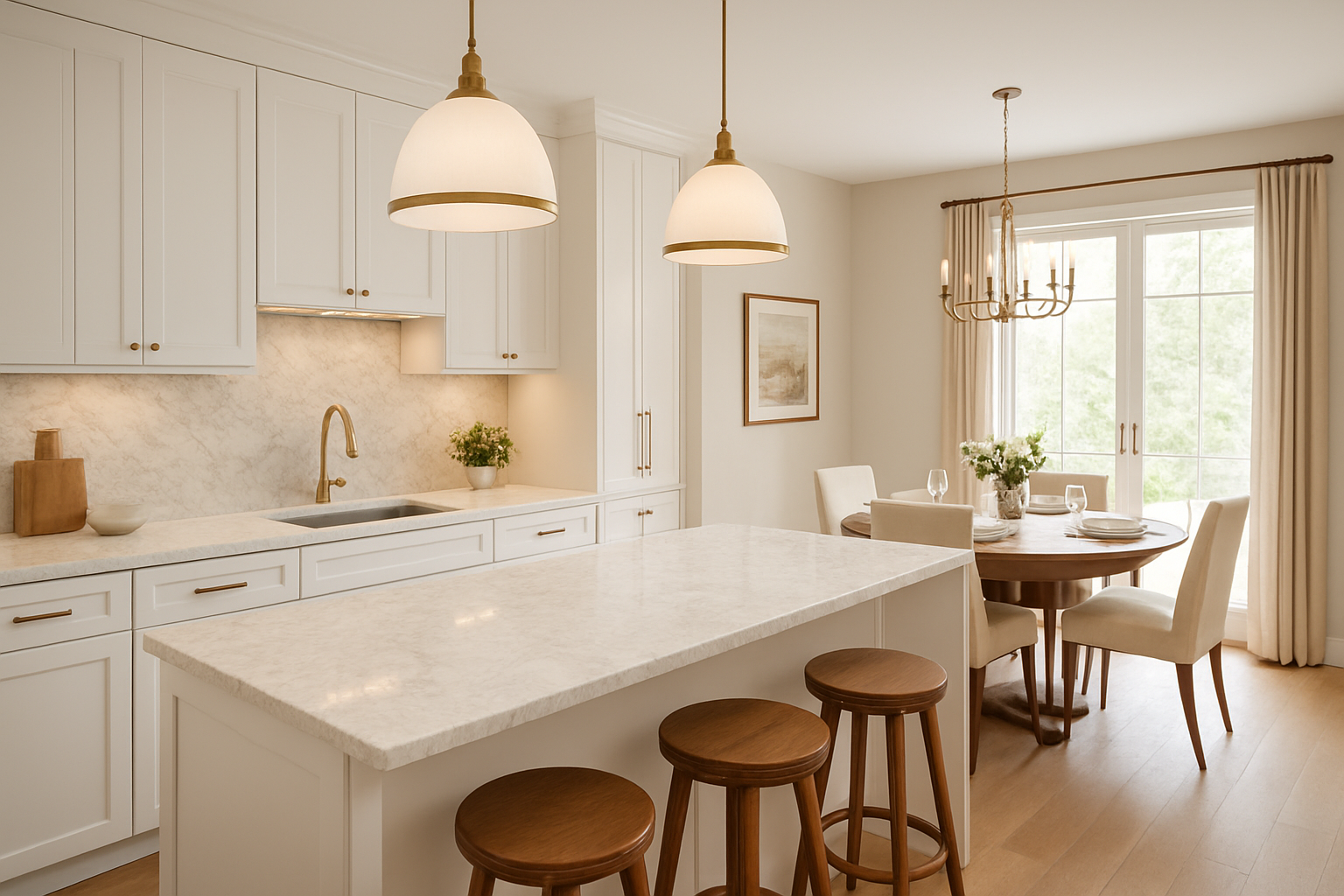
2. Define Zones with Layout and Furniture
Even without walls, you can create distinct zones in your open kitchen. An island or breakfast bar can serve as a natural divider between the cooking area and the living or dining room. Rugs, pendant lighting, or a change in flooring material can also help define spaces while maintaining a cohesive design.
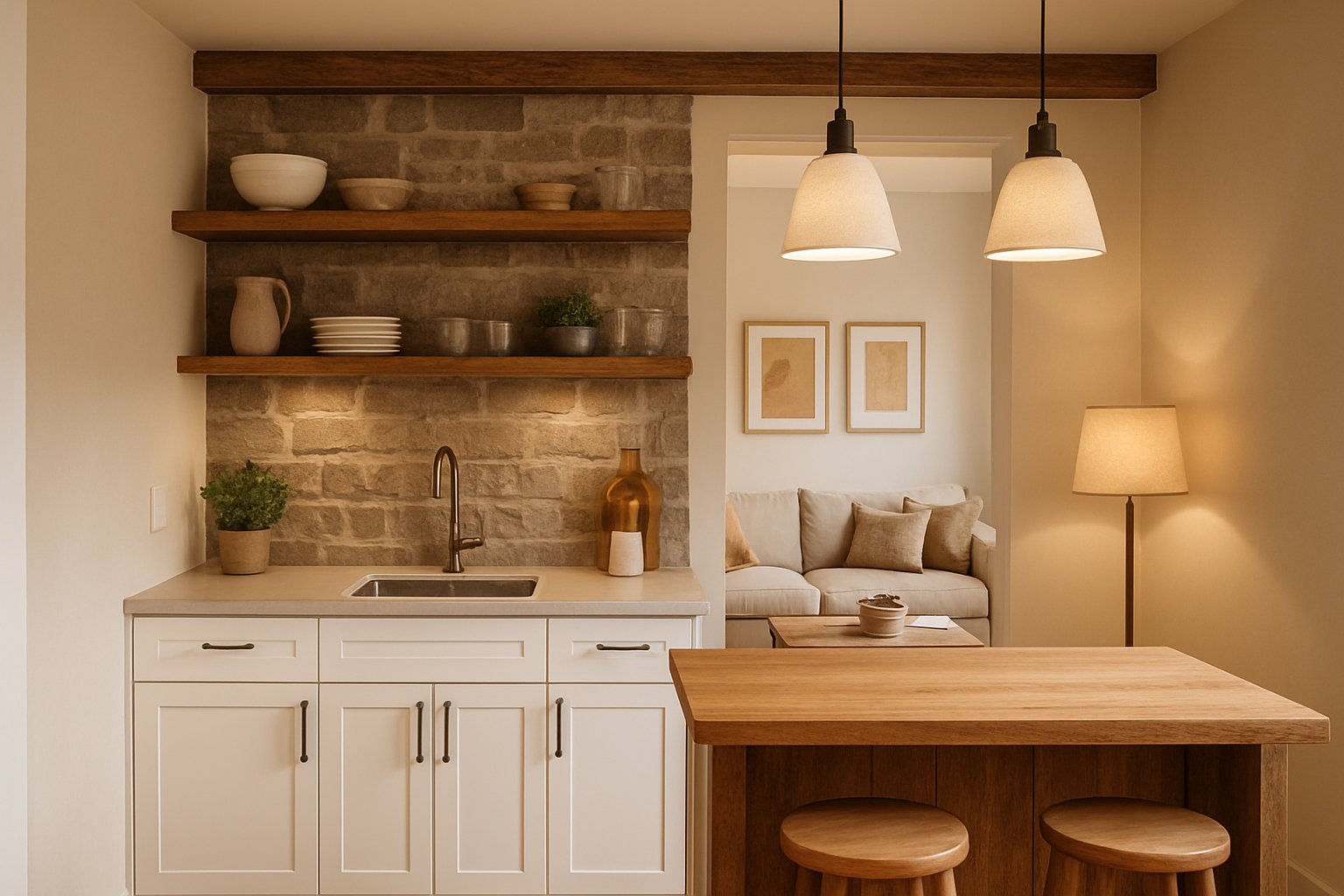
3. Maximize Storage Without Clutter
A key challenge of an open kitchen is keeping it tidy since it’s always visible. Opt for ample cabinetry, floating shelves, and concealed storage solutions to keep utensils, appliances, and pantry items organized. For a clean, streamlined look, choose cabinetry that blends with your overall home decor.
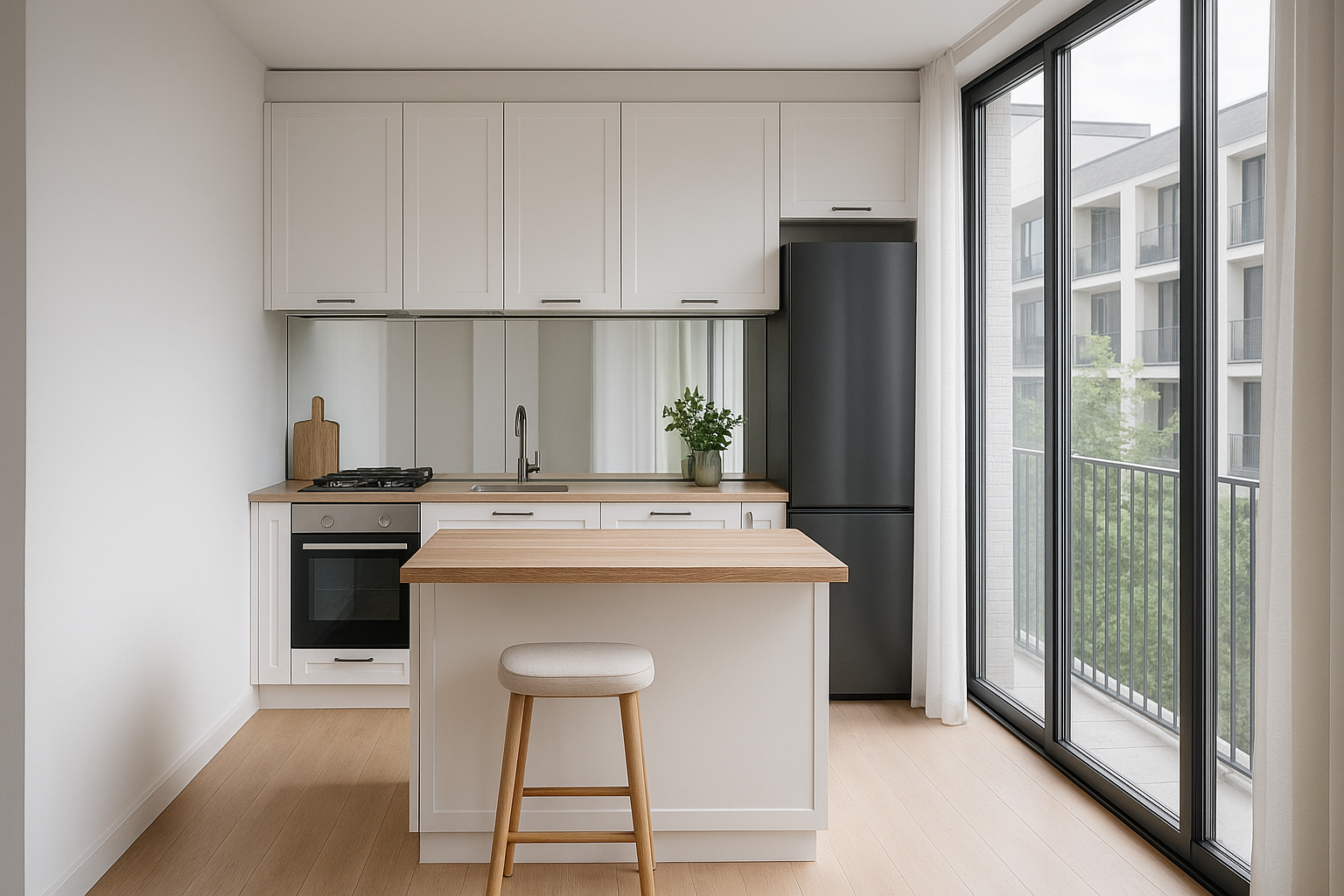
4. Play with Lighting Layers
Lighting is essential for setting the right mood in an open kitchen. Combine functional lighting — such as under-cabinet LEDs and spotlights — with ambient and decorative fixtures like chandeliers or pendant lights. This creates depth and adds personality to your space.
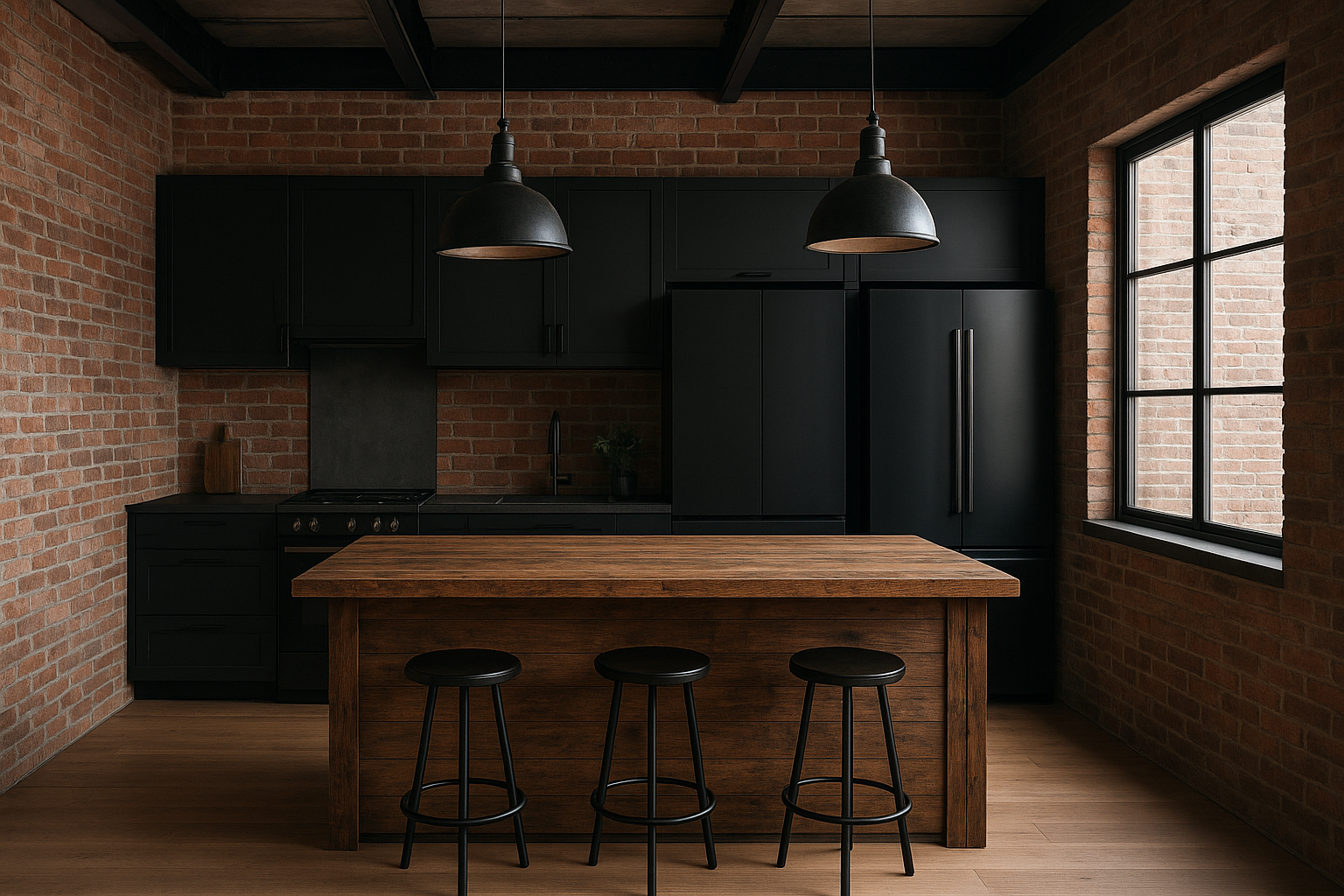
5. Choose a Cohesive Color Palette
To maintain harmony, choose colors that flow from the kitchen into adjacent spaces. Neutral tones like white, beige, or light gray work beautifully to keep the look airy, while adding pops of color through backsplashes, bar stools, or kitchen accessories can create visual interest.
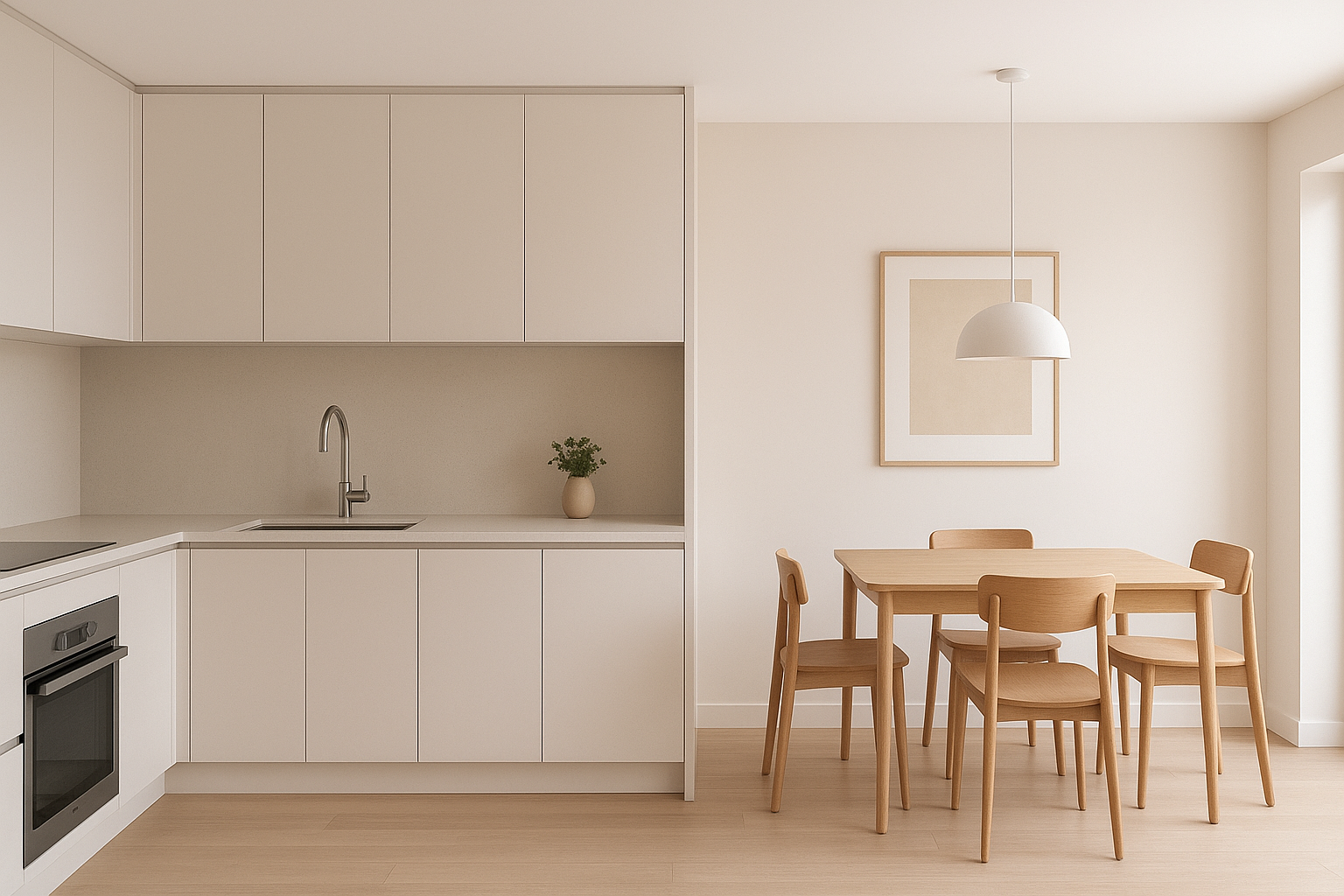
6. Incorporate Different Styles
Your open kitchen design can reflect any style you prefer — from minimalist Scandinavian to industrial chic or rustic farmhouse. For a modern look, opt for clean lines, glossy finishes, and integrated appliances. If you prefer a cozier feel, incorporate wood textures, warm lighting, and vintage-inspired fixtures.
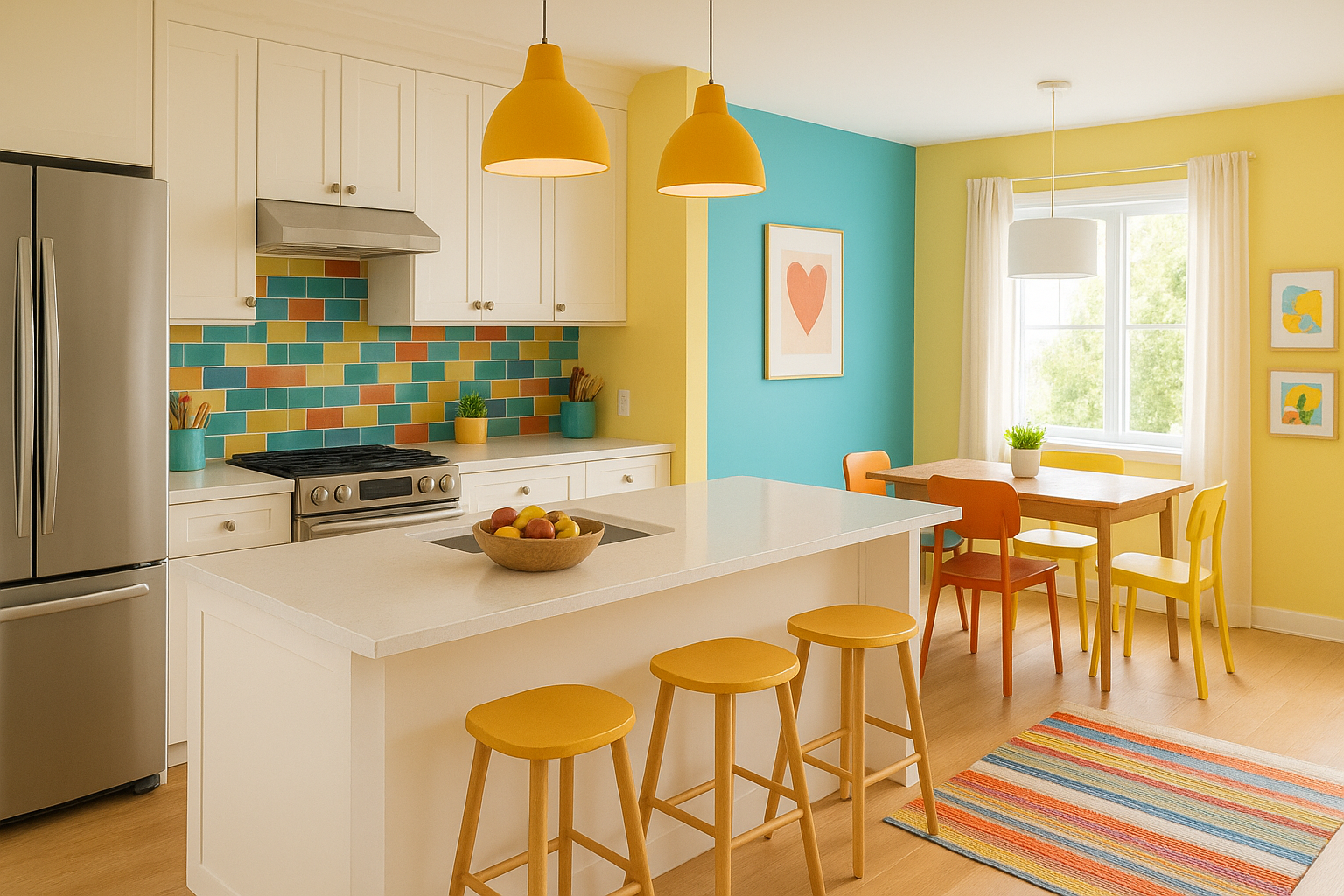
7. Make It Functional for Everyday Living
Since open kitchens are high-traffic areas, practicality should be at the forefront. Use durable countertop materials like quartz or granite, easy-to-clean flooring such as tile or laminate, and high-quality fixtures to withstand daily use.
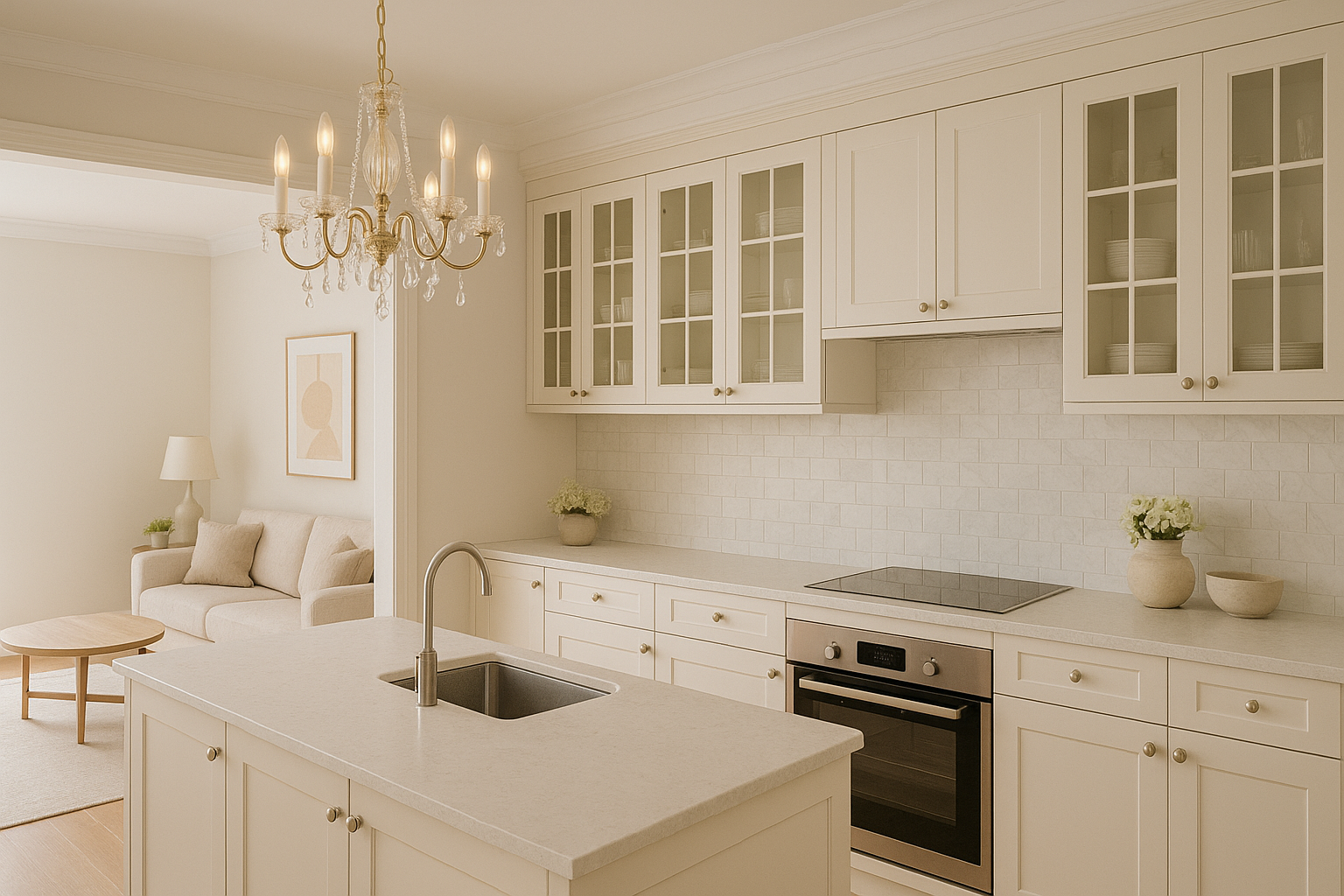
8. Add Personality Through Decor
Because the kitchen connects to living areas, decor choices have a big impact. Display stylish cookware, fresh flowers, or curated open-shelf arrangements. Wall art or decorative tiles can also help express your personality without cluttering the space.
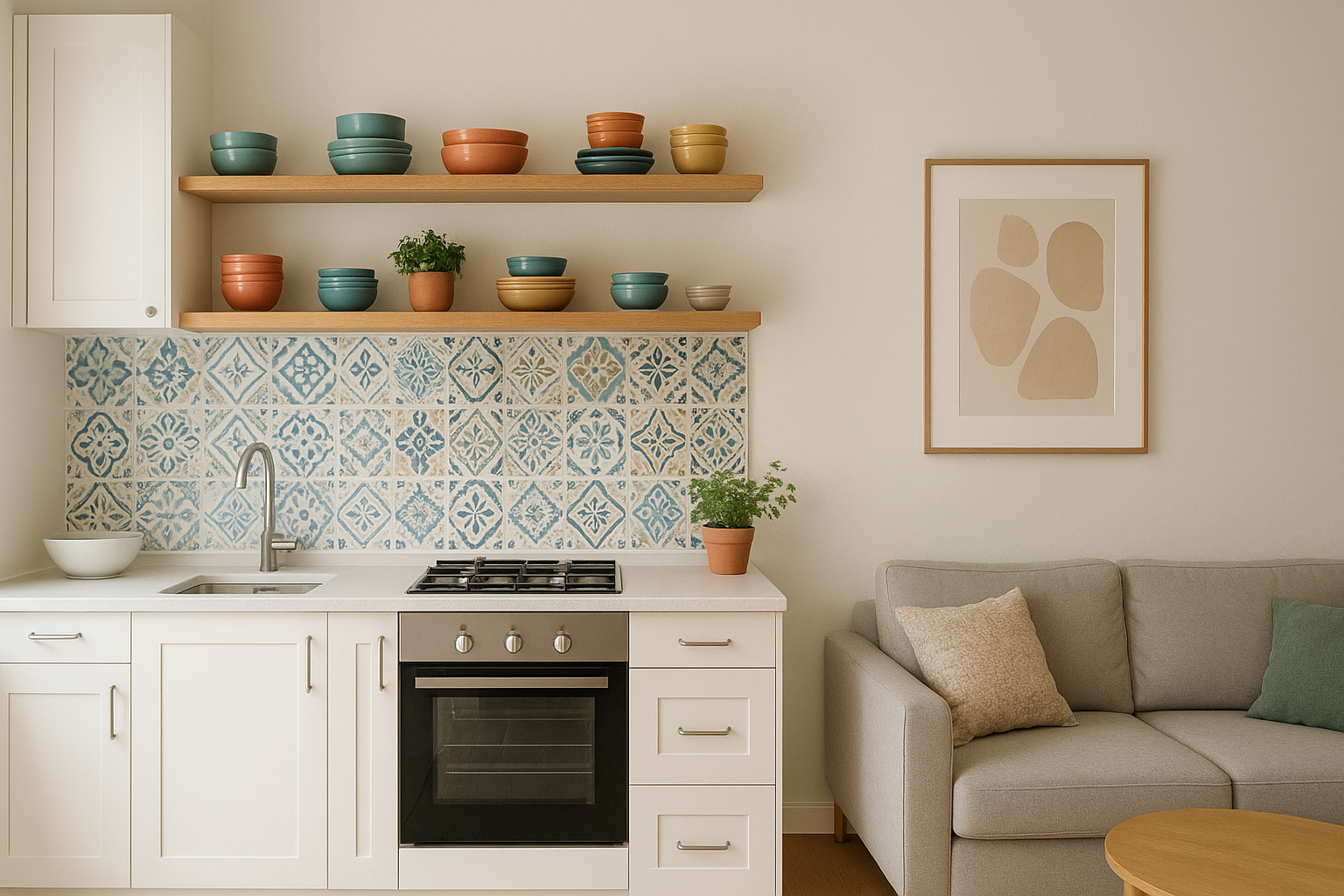
9. Small Space Solutions
Even in small apartments, an open kitchen design can work beautifully. Use space-saving furniture like extendable dining tables, slim islands, or wall-mounted shelves. Light colors, reflective surfaces, and minimal decor help create a feeling of openness.
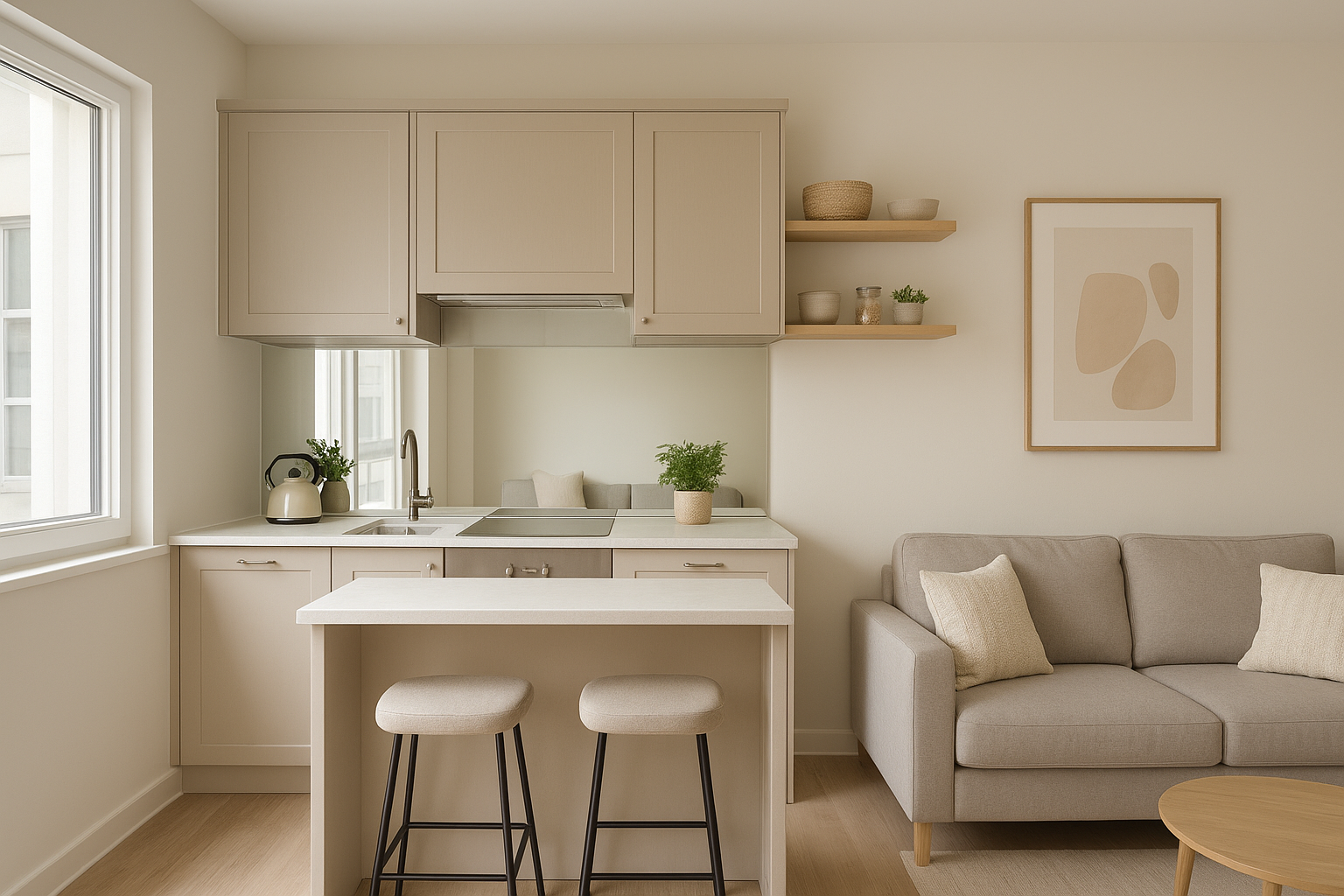
10. The Timeless Appeal
Open kitchens have stood the test of time because they suit modern lifestyles. They encourage togetherness, make entertaining easier, and enhance a home’s sense of space. Whether you’re planning a full renovation or a small makeover, an open kitchen can be a game-changer for your home.
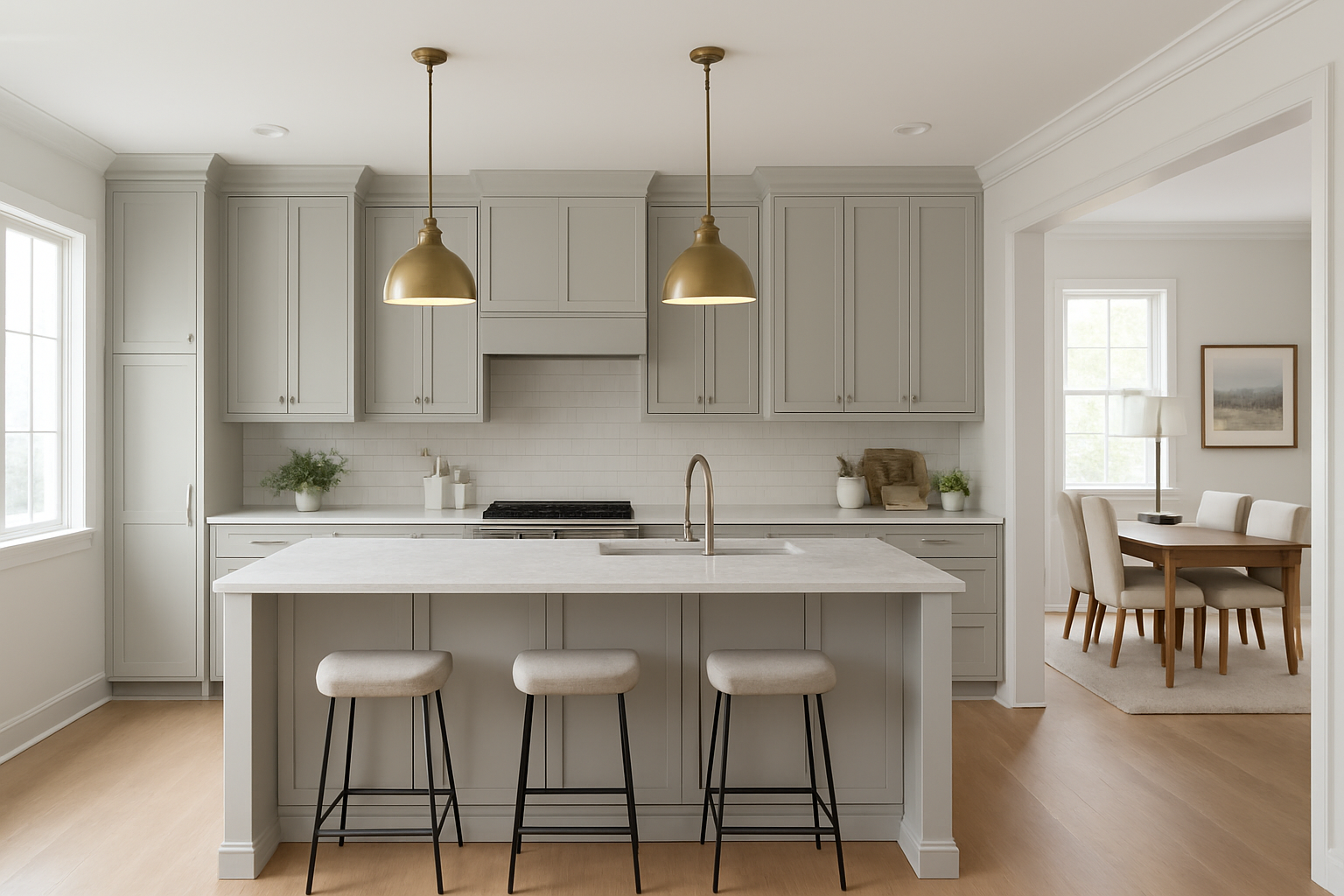
In summary:
An open kitchen design offers the perfect blend of style and functionality. By planning your layout carefully, using smart storage solutions, and selecting a cohesive aesthetic, you can create a space that feels open, welcoming, and uniquely yours.
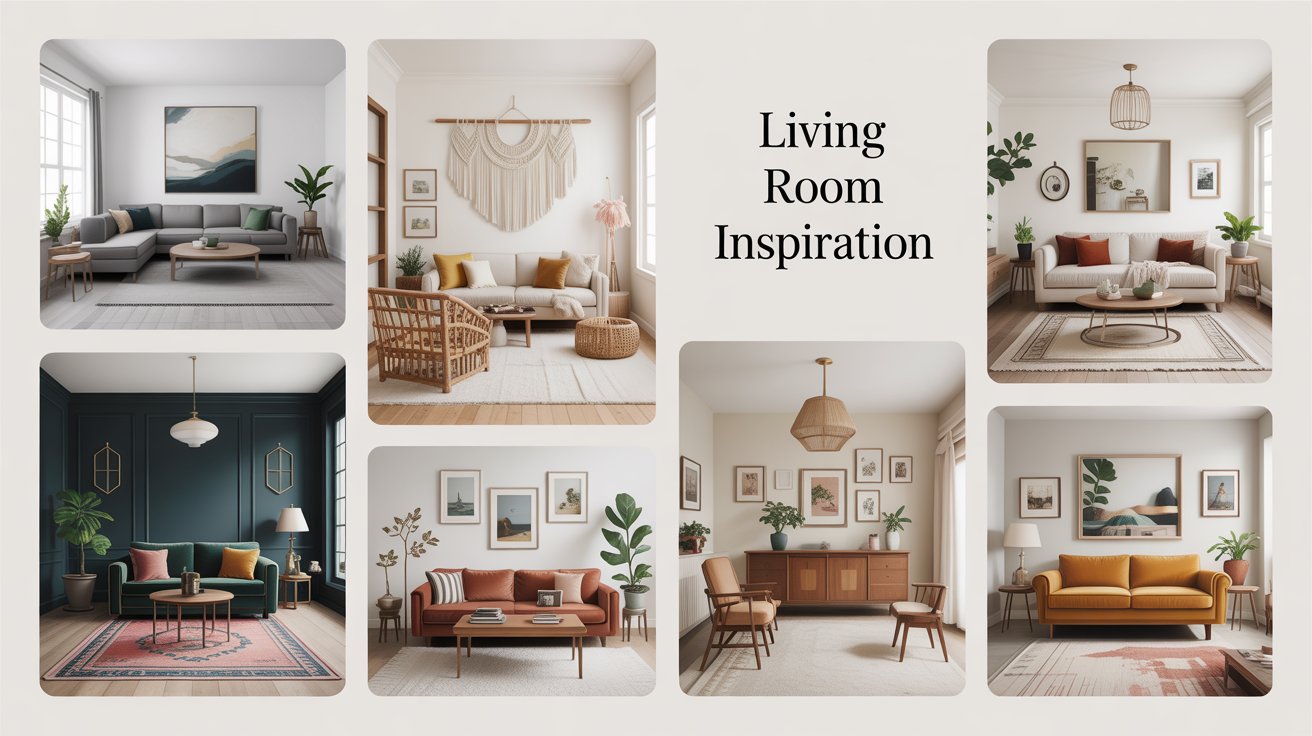
🏡 5 Stunning Living Room Decor Ideas That Instantly Elevate Your Space
Looking to refresh your living room but not sure where to start? Whether you’re into cozy minimalism, bold boho flair, or sophisticated drama, we’ve got you covered. These 5 living room decor ideas are not only stylish but also highly adaptable to your personal taste and space. Let’s dive into some of the most stunning looks trending right now—with visual prompts to inspire your next makeover.
1. Cozy Neutrals: Minimalist Living Room Vibes
If you’re drawn to calm, airy spaces, a minimalist living room in neutral tones is a timeless choice. Think off-white walls, plush beige sofas, and warm wooden accents. Add soft throw blankets and natural elements like pampas grass to create depth and comfort without clutter.
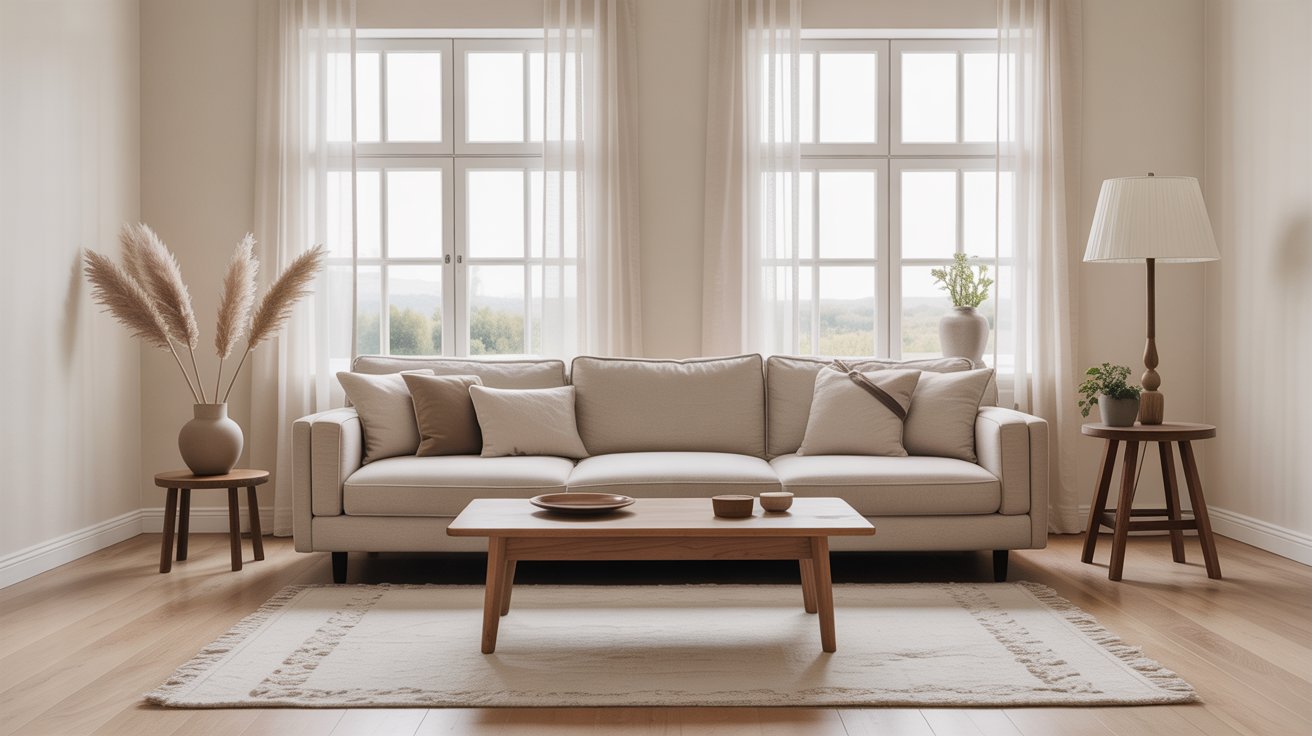
🪄 Style Tip: Layer different textures (like boucle, linen, and wood) to keep your minimal palette interesting.
2. Modern Boho: Eclectic & Warm
For those who love color, texture, and a laid-back vibe, modern boho is your go-to. Combine rattan furniture, vibrant textiles, and lots of greenery to create an eclectic but harmonious space.
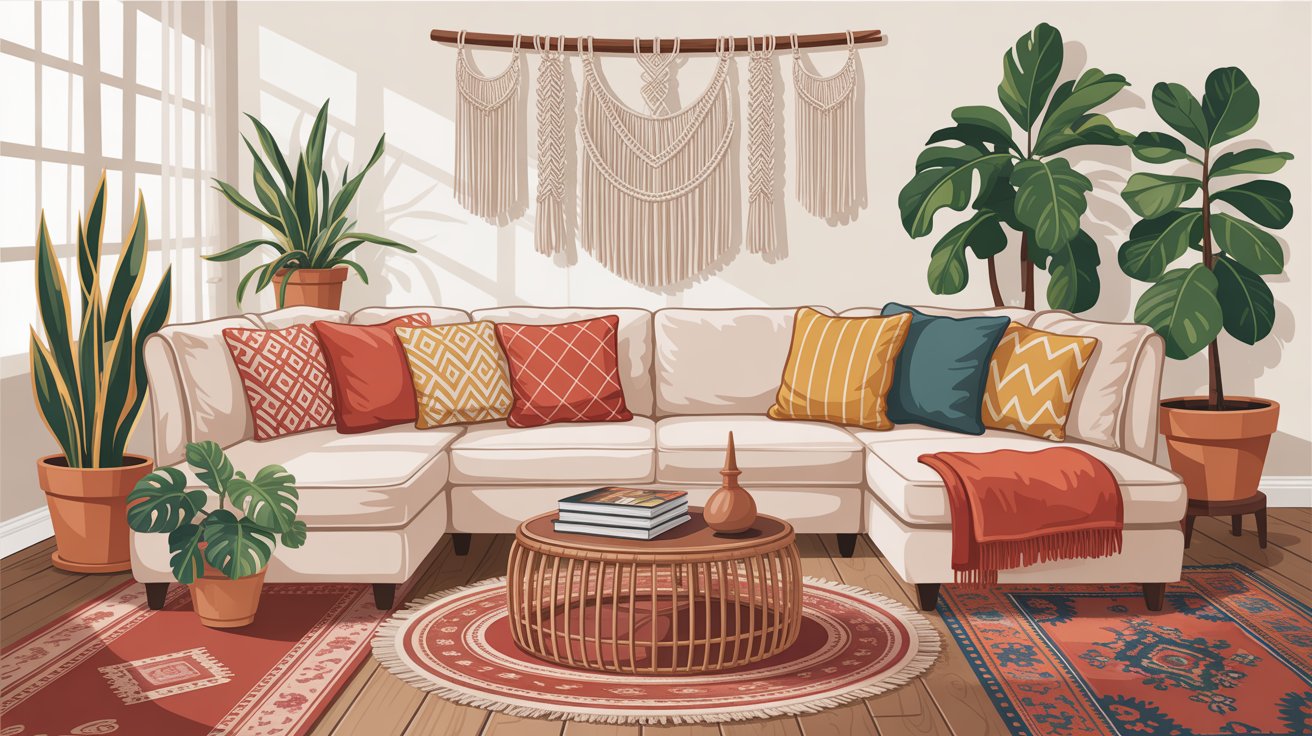
🪴 Style Tip: Don’t be afraid to mix patterns—just stick to a cohesive color palette to keep it visually balanced.
3. Dark & Moody: Sophisticated Living Room Style
Make a bold statement with deep, rich tones and luxe textures. A dark moody living room, with velvet furniture and metallic accents, oozes elegance and modern drama.
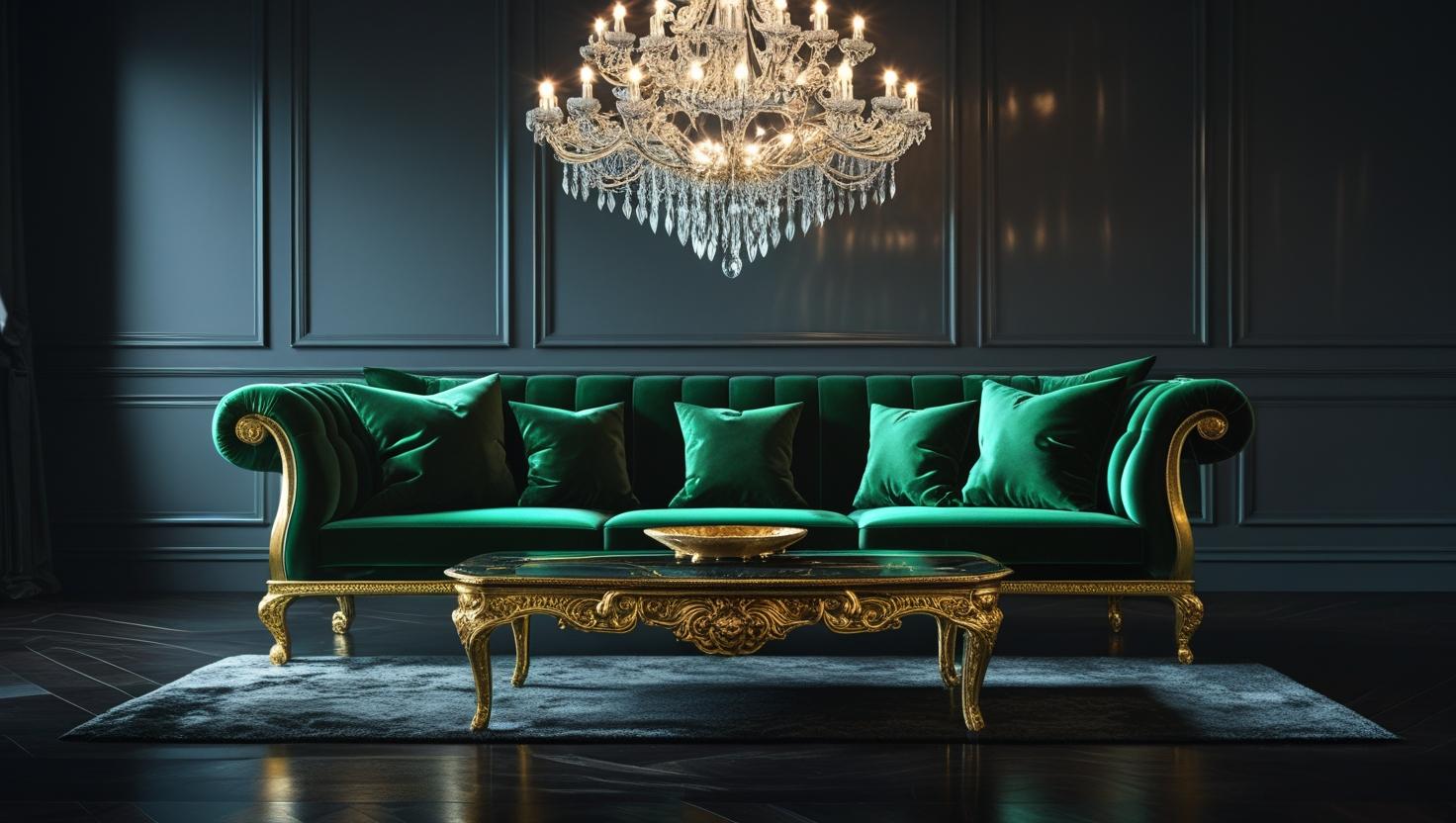
🕯️ Style Tip: Use strategic lighting—like wall sconces and floor lamps—to highlight the richness of the space.
4. Japandi Fusion: Calm Meets Clean
Japandi is the perfect fusion of Japanese Zen and Scandinavian functionality. This minimalist yet warm aesthetic favors neutral tones, organic shapes, and lots of negative space.
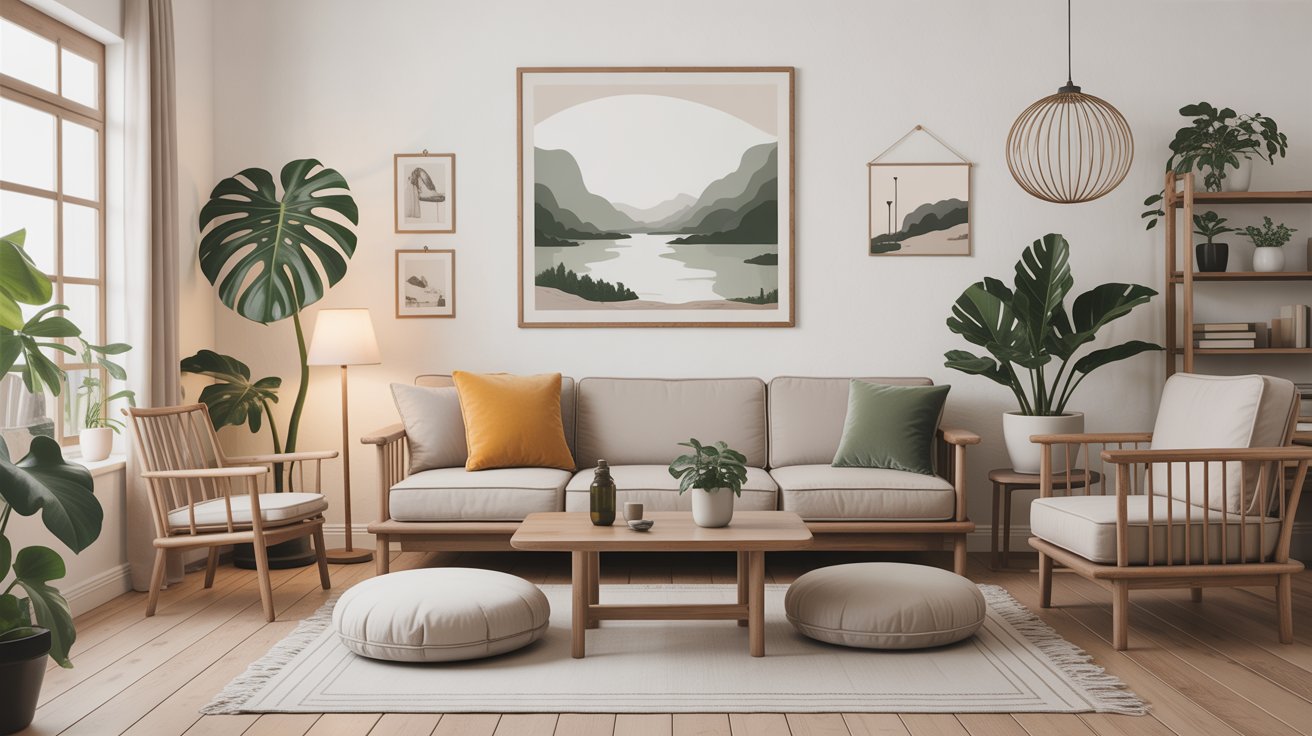
🌿 Style Tip: Focus on quality over quantity. Each piece should serve a purpose and contribute to the room’s tranquility.
5. Vintage Charm: Retro Living Room Revival
Add nostalgic charm to your home with a retro-inspired living room. From teak wood consoles to bold color palettes, this style is full of character and playful vibes.
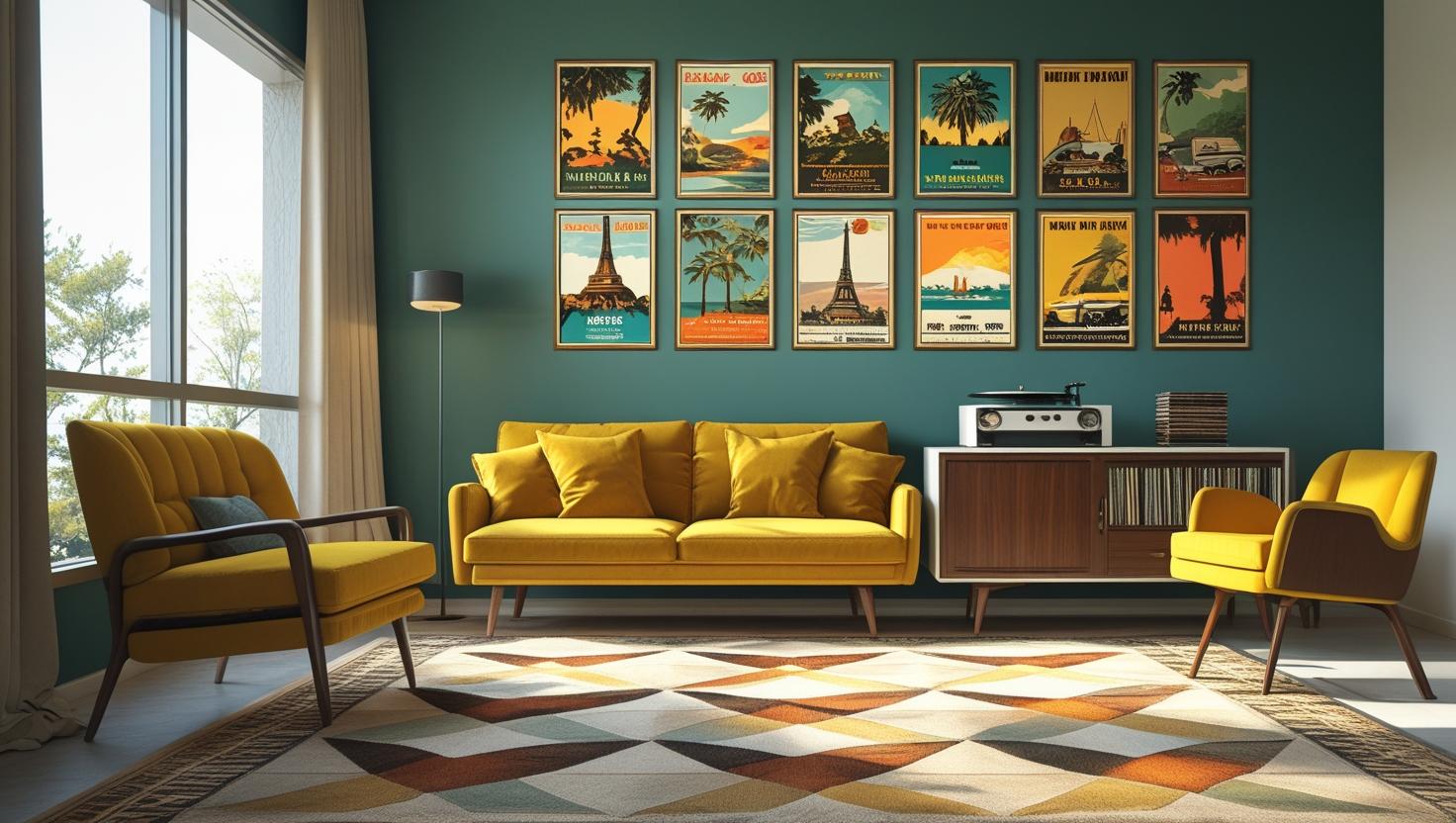
📻 Style Tip: Hunt for original vintage pieces at flea markets or thrift stores to get that authentic feel.
✨ Final Thoughts
Your living room is a reflection of your personality, and these 5 styles offer a wide range of inspiration—from serene minimalism to expressive retro vibes. Whether you’re going for clean and calm or bold and cozy, a little creativity and the right decor pieces can transform your space entirely.
📌 Pin your favorite look and start creating your dream living room today!